 |
 |
 |
 |
 |
 |
 |
 |
 |
 |
 |
| Last Updated: Thu Jul 14 11:51:52 UTC 2016 |
 |
 |
 |
 |
 |
 |
 |
 |
 |
 |
 |
| Last Updated: Thu Jul 14 11:51:52 UTC 2016 |
| Australian Suburban Wildlife (Page
IIB) |
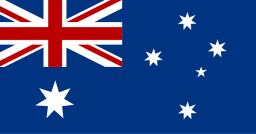 |
|
Mundane
as
Australian
suburbia
might
be,
we
often
do
get
interesting
visitors. This
multi-part
web
page contains a selection
of recent
wildlife
pictures of interest, especially bird life, and some typical habitats.
Photos and text ¿ 1997-2012 Carlo Kopp; Photographs produced using a Fuji S5600 5.1 MP, Fuji S5800 8.0 MP, Fuji HS10 10.3 MP, Mamiya 645/1000S and Nikon D90. |
|
Noble Park and Keysborough, Victoria |
|
The Common Brushtail Possum
(Trichosurus vulpecula) is a
frequent occupant of urban areas and grows to a weight of 4.5 kg,
although this example could be larger. These are arboreal foragers
which often steal petfood and ravage suburban fruit trees. This species
is a frequent victim of electrocution on high voltage lines - I once
observed an example fall from from a 7 metre power pole following a
large blue discharge and bang, but recover and scurry off when I
arrived to bury what I assumed was a deceased beast. The example
depicted is also unusual as it has the less common rusty brown face and
shoulder colouring (Images
¿ 2012 Carlo
Kopp; Nikkor 70-300mm f/4-5.6D ED / D90 with internal flash).
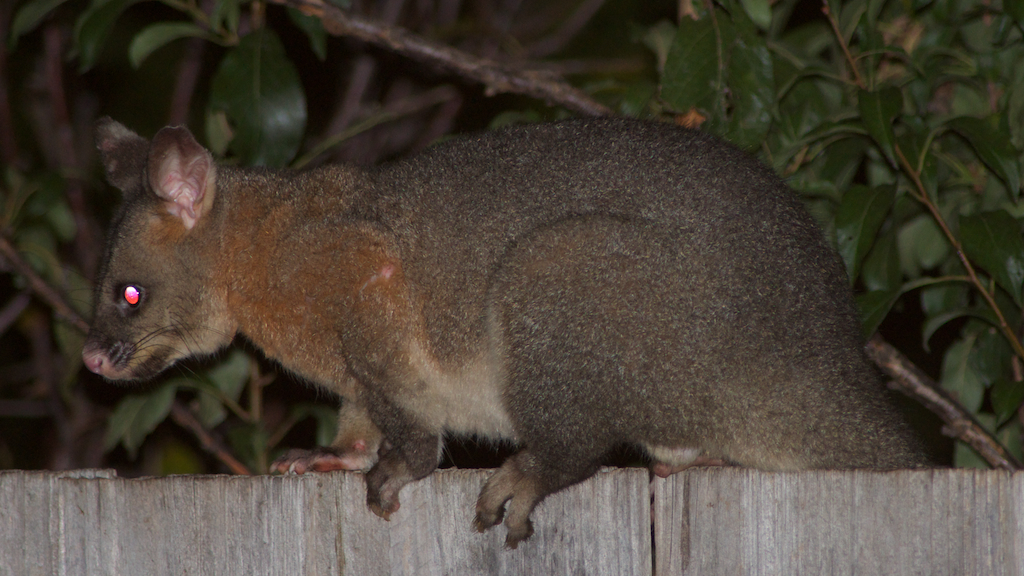 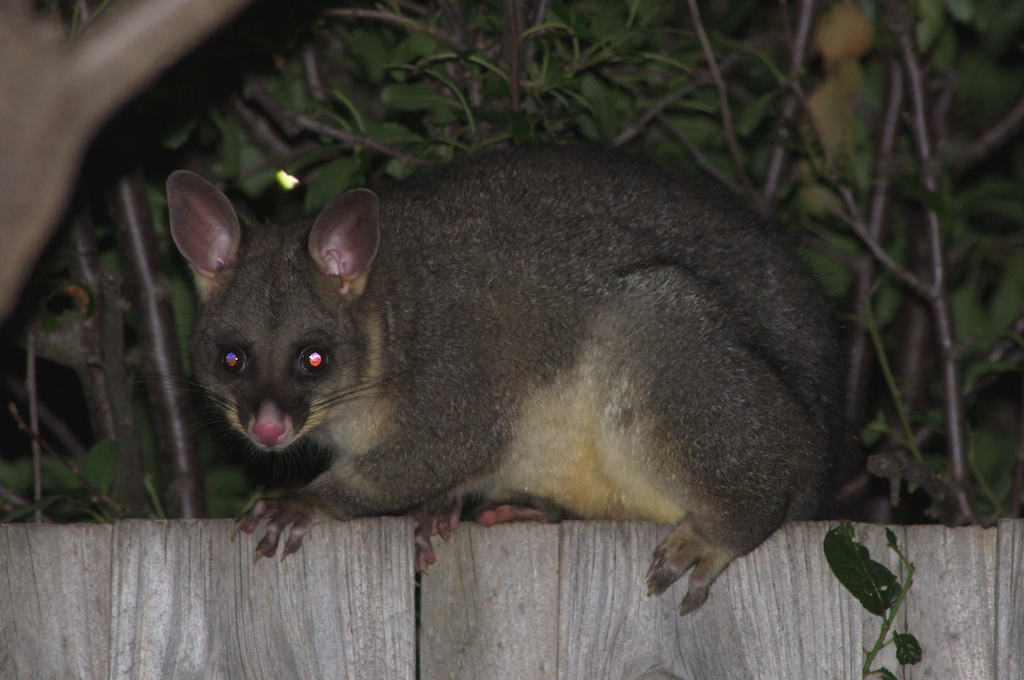 Another
Common Brushtail Possum, photographed on the fence in January, 2013.
This example is different in size and coat coloration, compared to the
example photographed in 2012 (Images ¿ 2013 Carlo Kopp; Nikkor 70-300mm
f/4-5.6D ED / D90 with internal flash).
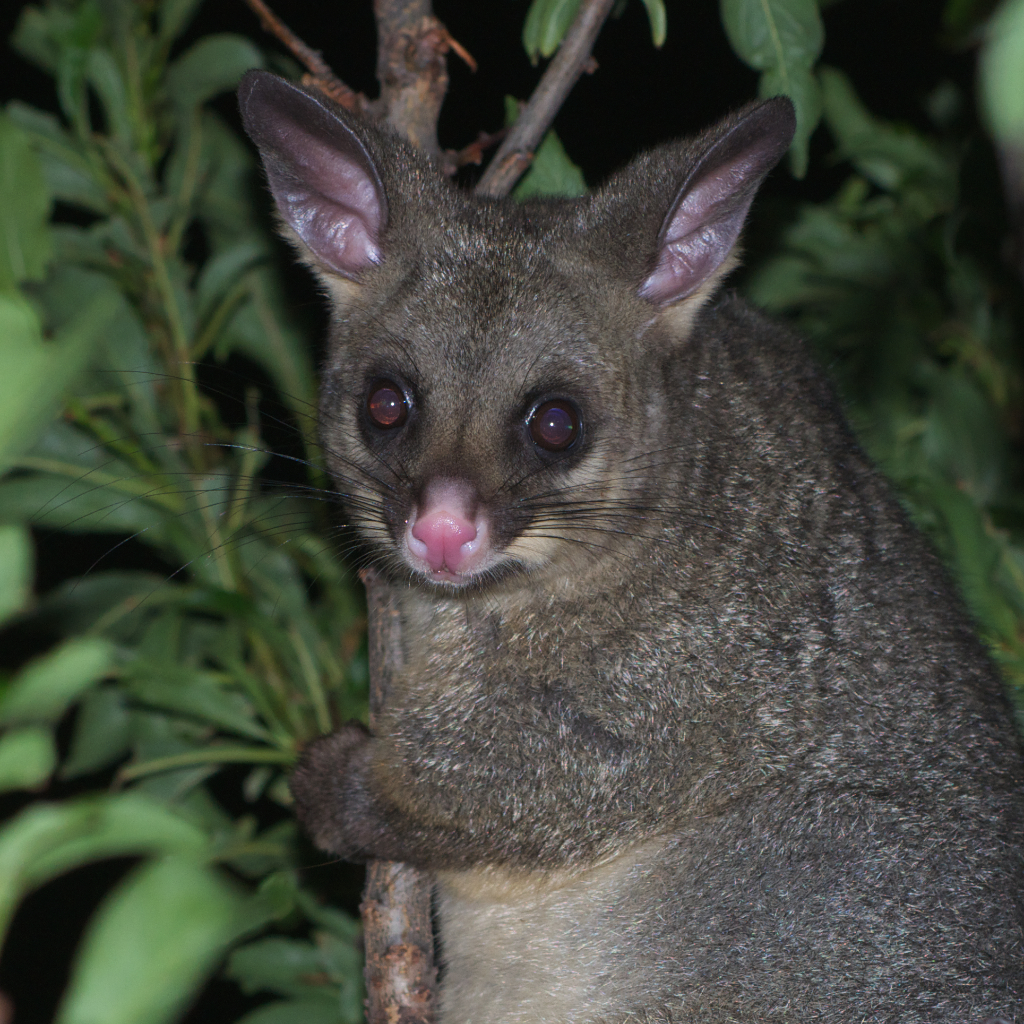 A possum raiding the
neighbour's yet to ripen nectarines. Possums are accomplished climbers
and
fruit trees are a favourite target where accessible (Images ¿ 2013
Carlo Kopp; Nikkor 70-300mm
f/4-5.6D ED / D90 with internal flash).
|
Common House Mouse |
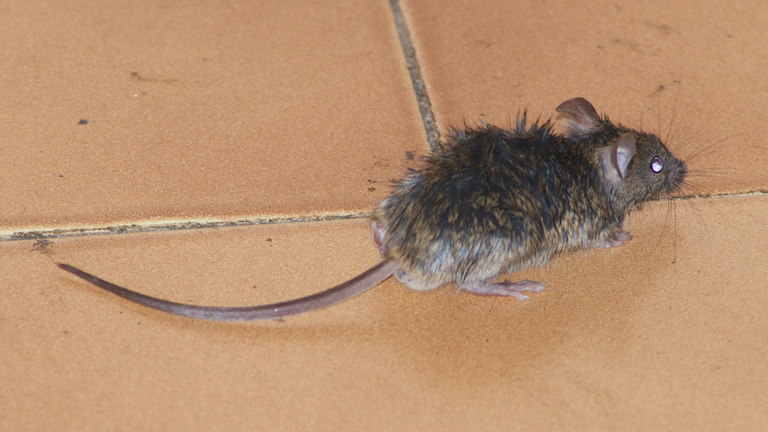 An unwanted household visitor, the
Mus Musculus or common House Mouse, another globalised pest. This
appears to be a juvenile (Images
¿ 2012 Carlo
Kopp; Nikkor 70-300mm f/4-5.6D ED / D90 with internal flash).
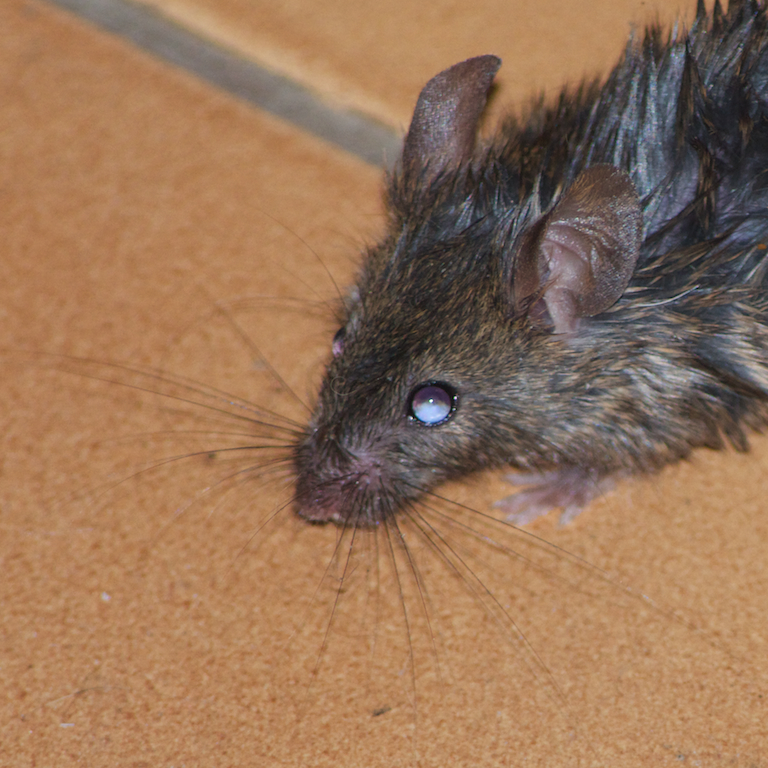 Australian Bush Rat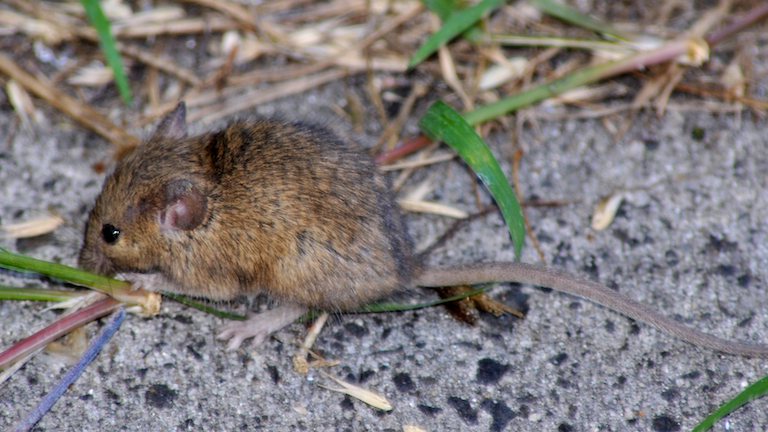 Juvenile Australian Bush Rat. This
is an extremely docile species, this tiny example wandered into my flat
and allowed itself to be picked up and carried into the backyard, where
it waited for me to photograph it (Images
¿ 2011 Carlo
Kopp; Nikkor 70-300mm f/4-5.6D ED / D90).
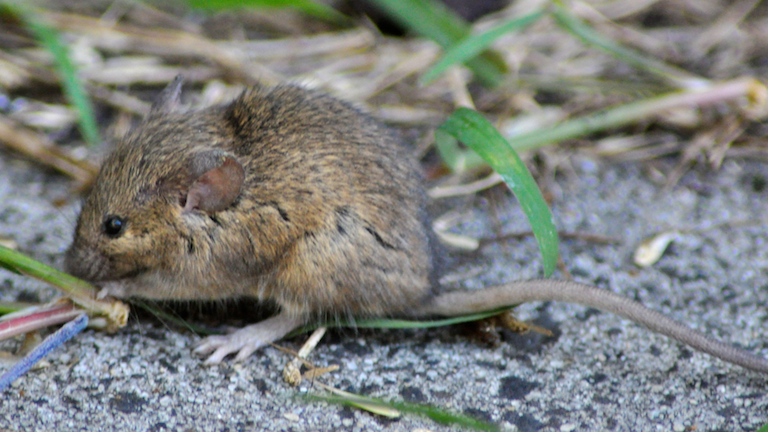 |
Rainbow Lorikeet |
 Rainbow Lorikeet foraging for nectar in a suburban eucalypt tree in Noble Park (Image ¿ 2011 Carlo Kopp; Nikkor 70-300mm f/4-5.6D ED / D90). Rainbow Lorikeet foraging for nectar in a suburban eucalypt tree in Noble Park (Image ¿ 2011 Carlo Kopp; Nikkor 70-300mm f/4-5.6D ED / D90). 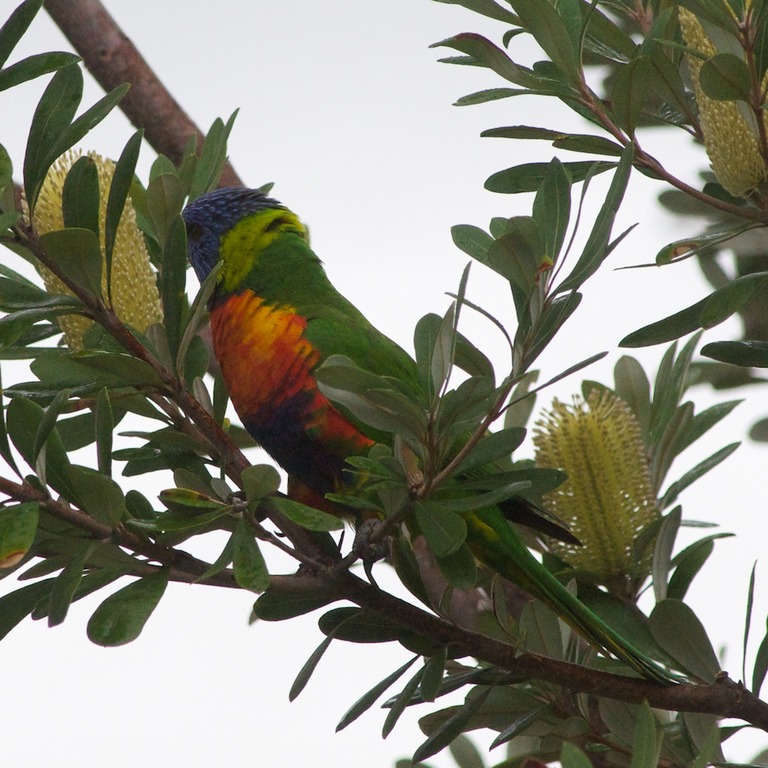 Rainbow
Lorikeet feeding
on a Banksia Integrifolia (Nikkor 70-300mm f/4-5.6D-ED/ D90 03/2012).
|
 Spotted Dove perched on a
neighbour's roof. This introduced Asian species seems to
be
the most common pidgeon in the Yarraman area, and widely regarded to be
a pest, albeit an attractive one (Images ¿ 2012 Carlo Kopp; Nikkor
70-300mm f/4-5.6D ED / D90).
Above,
below, same Dove.
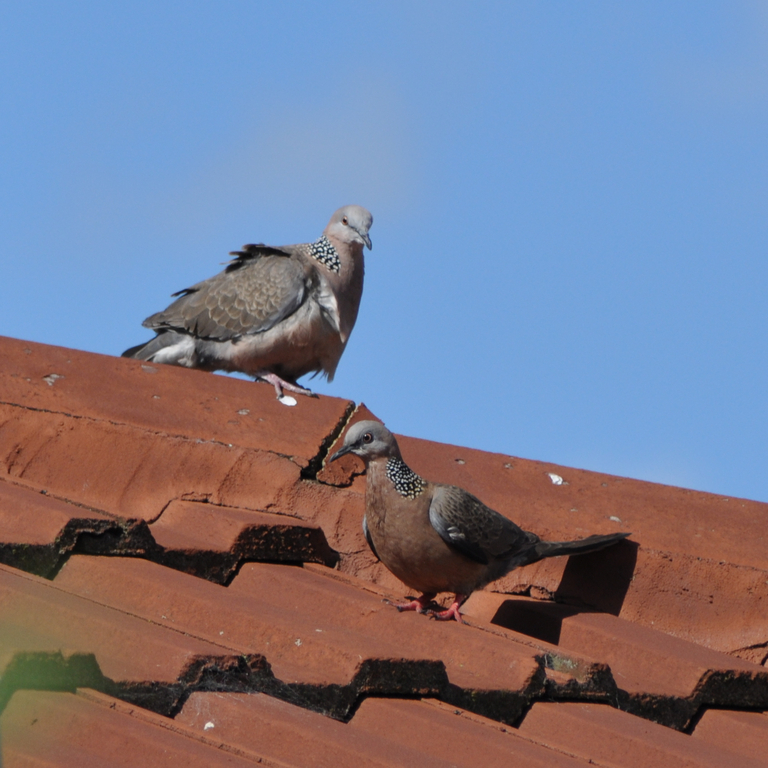 A
pair
of Spotted Dove
walking on a tiled roof (Nikkor 70-300mm D-ED/
D90 08/2011).
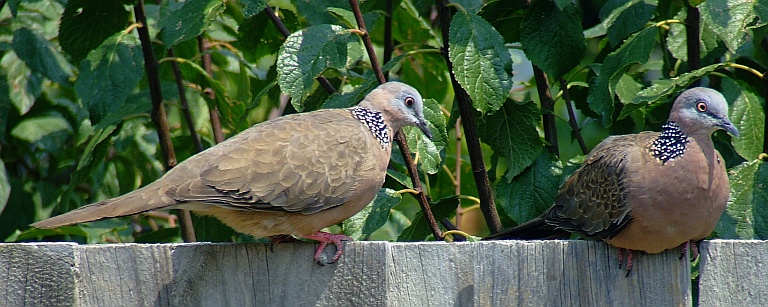 Another
portrait
of a Spotted Dove.
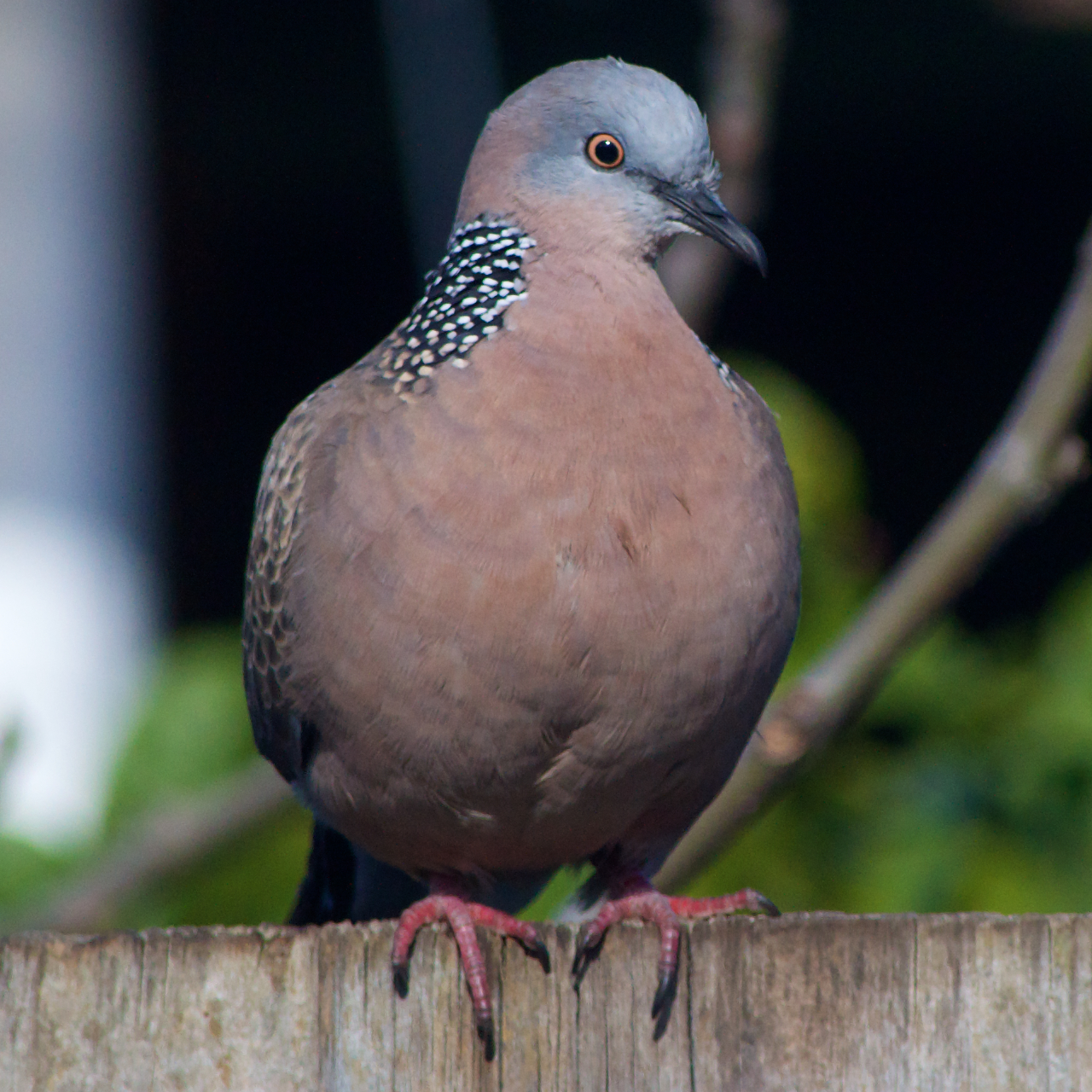  A Spotted Dove stretching its wings.  A Spotted Dove walking across a tin roof (Nikkor 70-300mm D-ED/ D90). 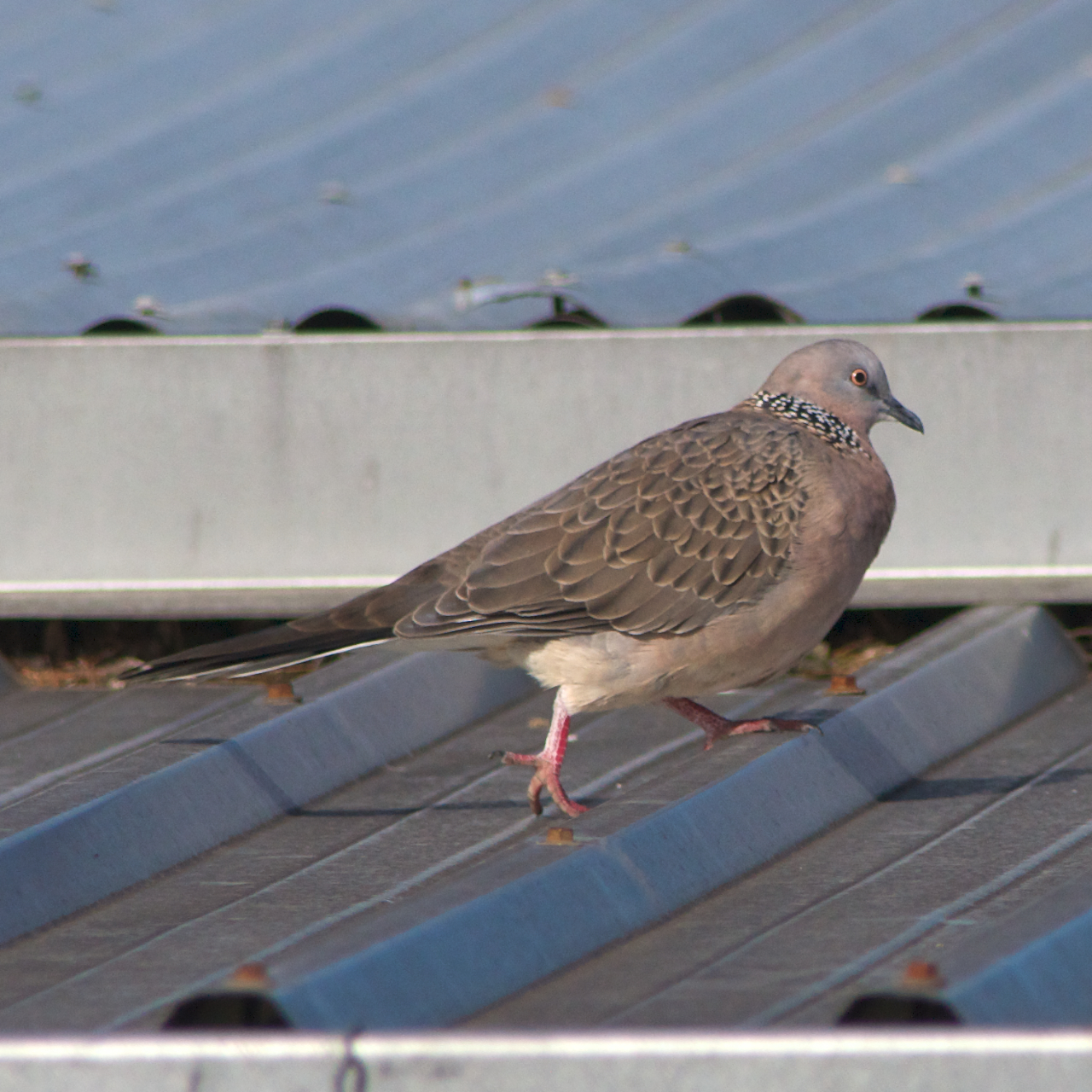 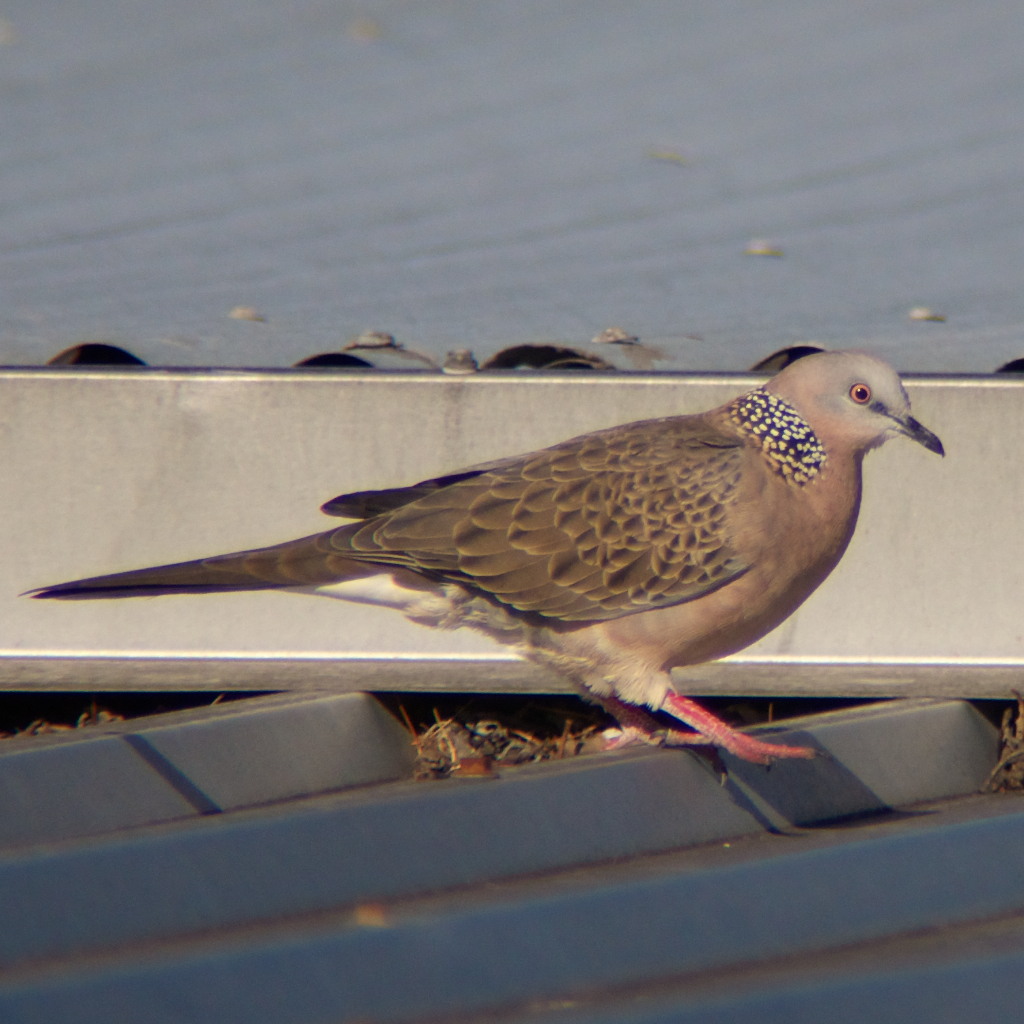 A Spotted Dove walking across a tin roof (Tokina 50-250mm f/4-5.6 ATX MF / D90). 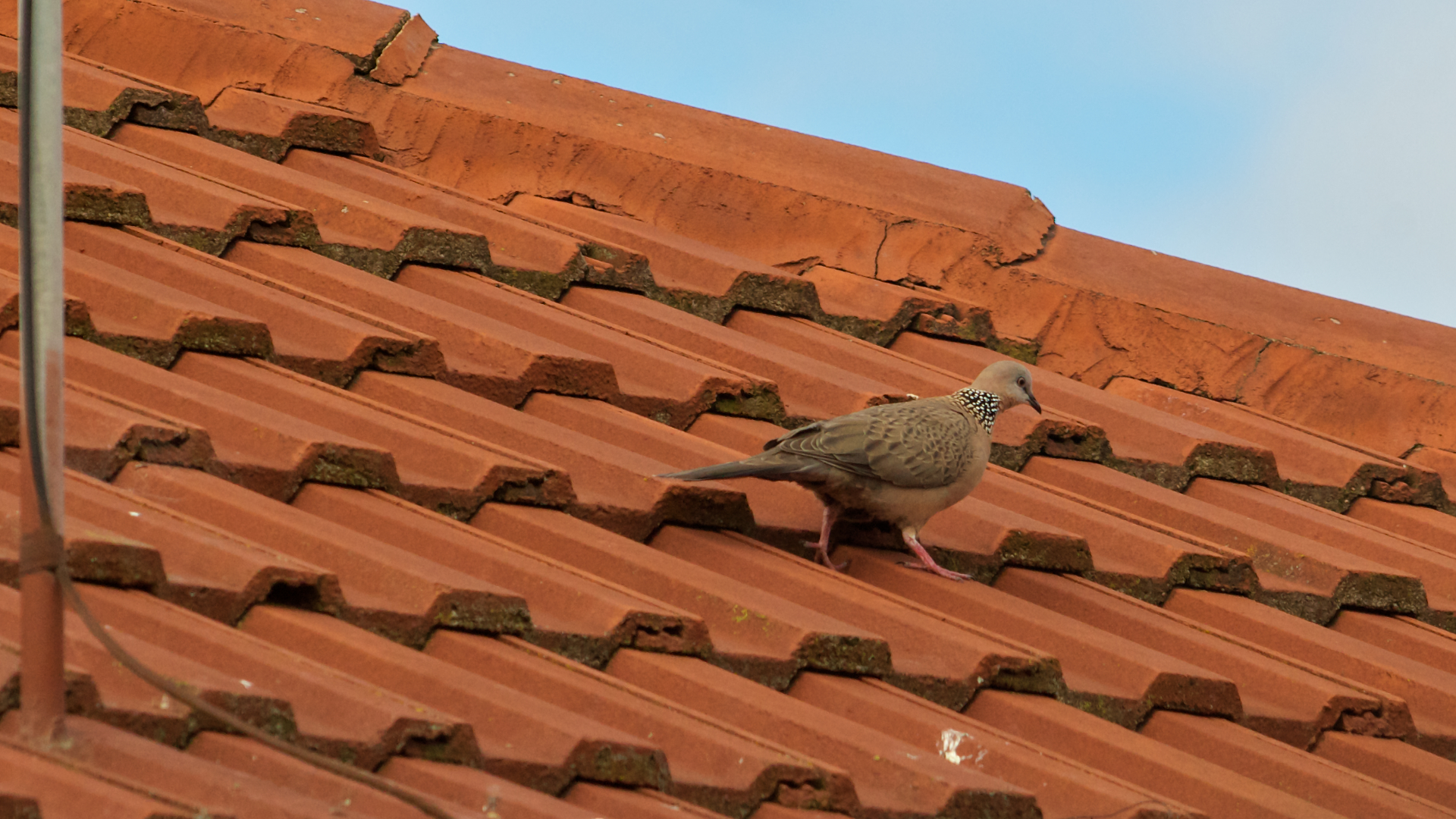 A Spotted Dove walking across a tiled roof (Sekor C 105-210mm f/4.5 ULD / D90). 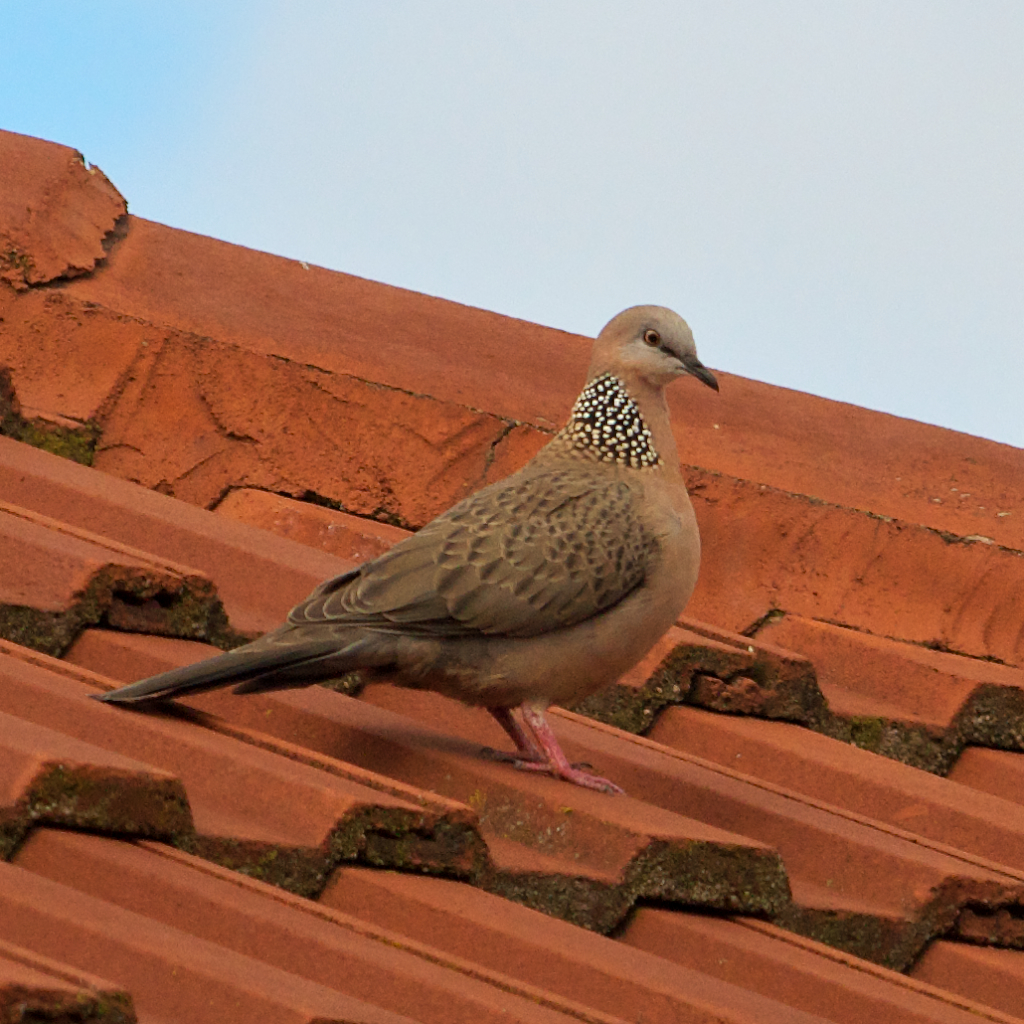 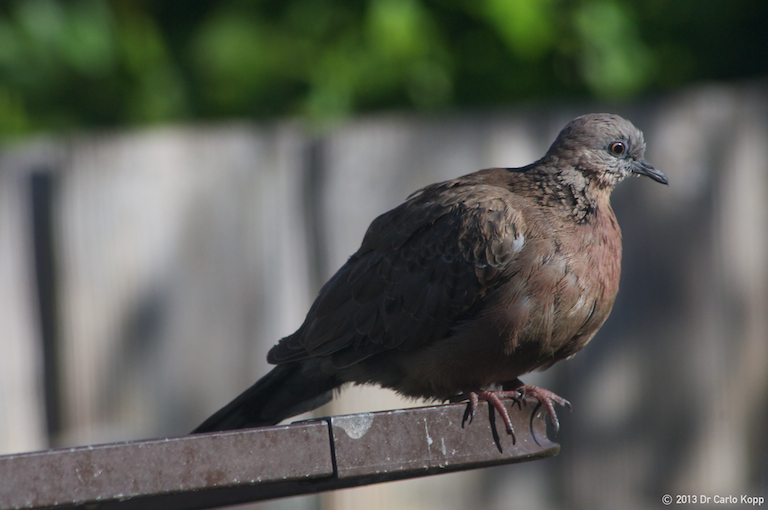 An unusual chocolate coloured Spotted Dove,
first two images in juvenile plumage (May 2013) without the
characteristic spotted collar, the latter in adult plumage (October
2013) with the fully developed collar. The seventh image is a specimen
in typical plumage, shot at the same time (October 2013) for comparison (Nikkor
AF-S 70-300mm D-ED, Sigma AF 400mm f/5.6 APO / D90).
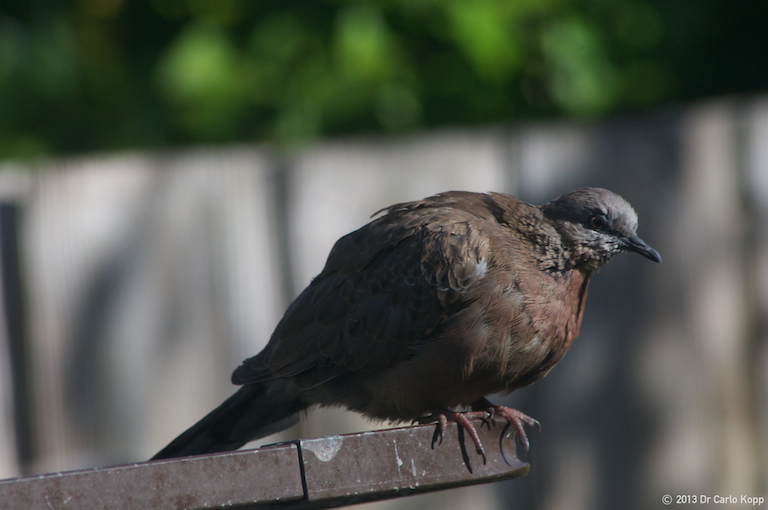 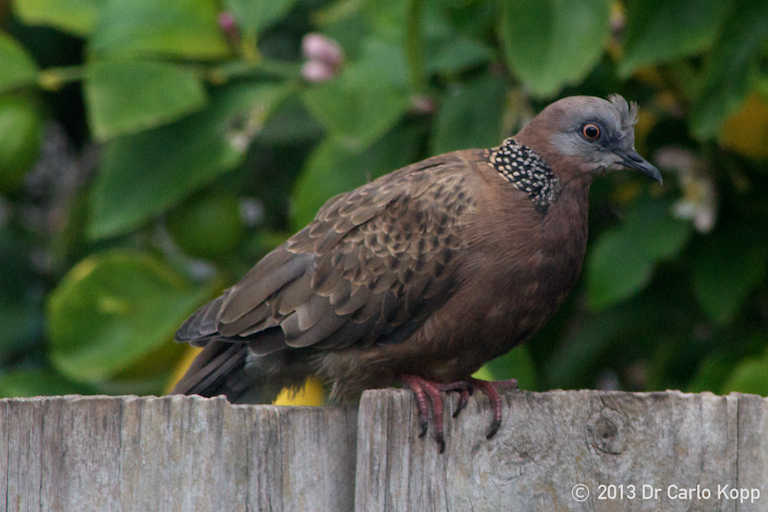 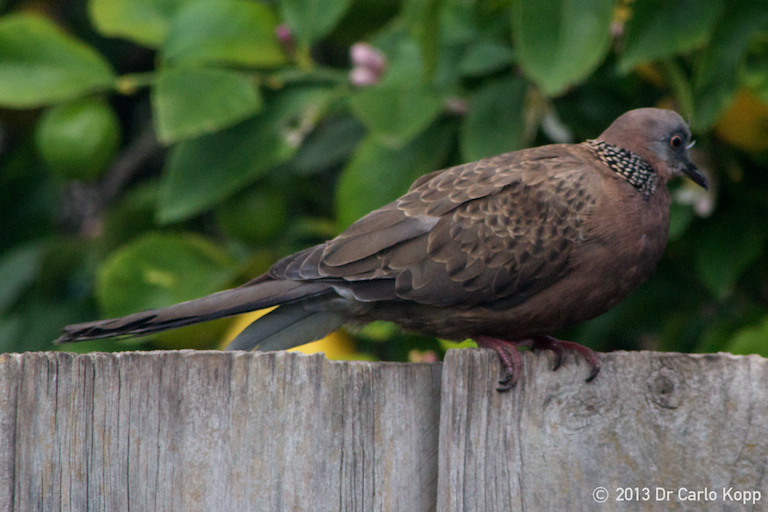 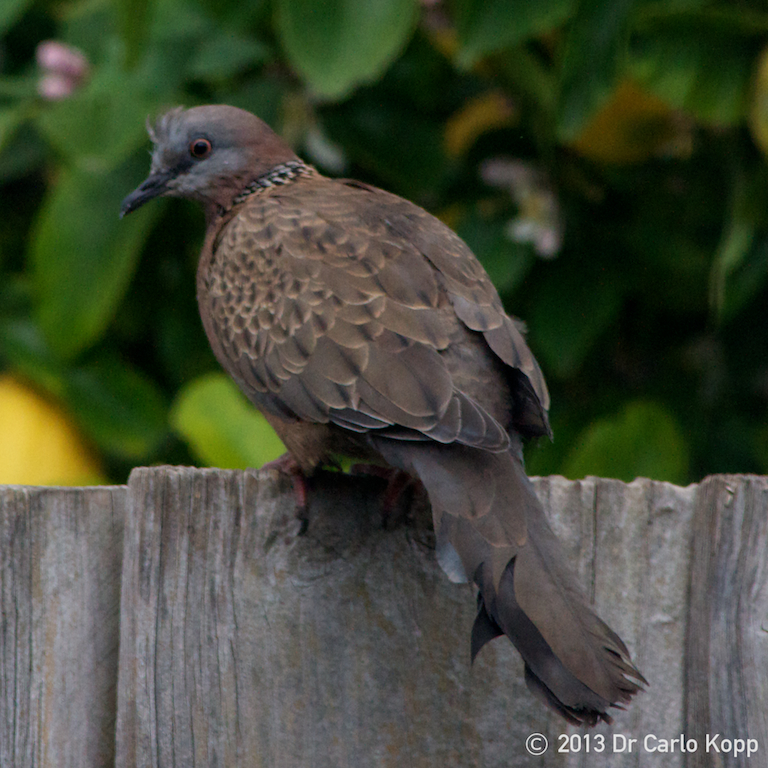 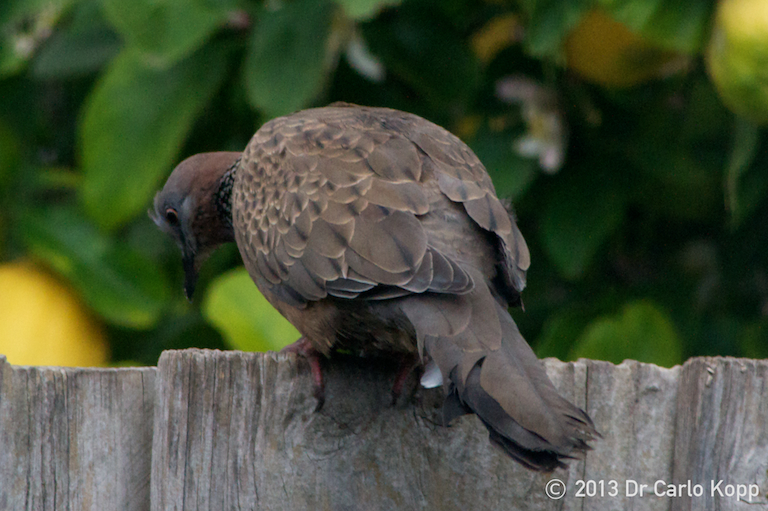 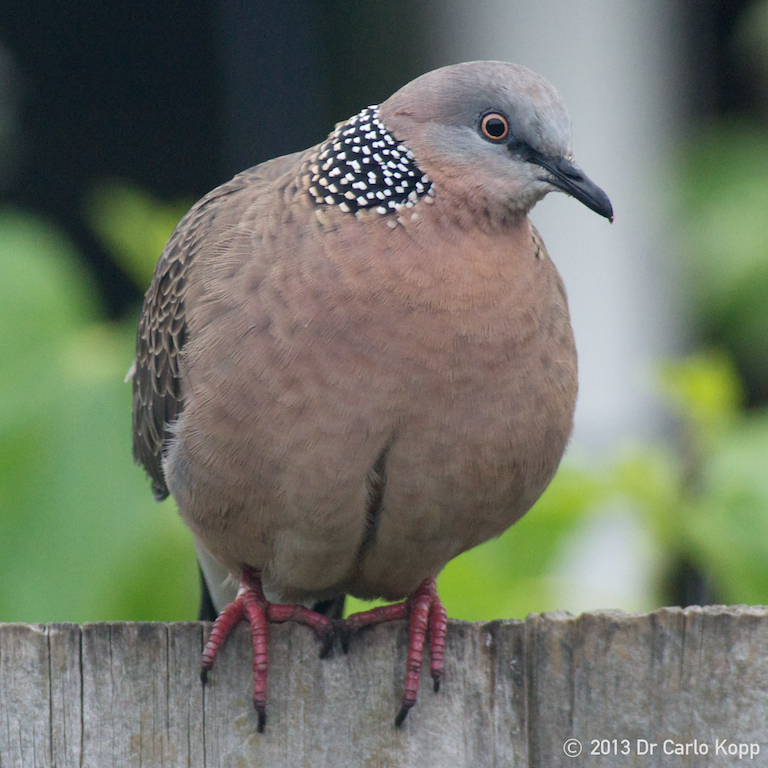 Australian Crested Pidgeon The Crested Pidgeon is an
Australian species common across most of the continent, and increasing
seen in the suburbs of major cities. These attractive birds are very
social and mated pairs frequently display affection (Nikkor
70-300mm f/4-5.6D-ED/
D90 March/June 2012).
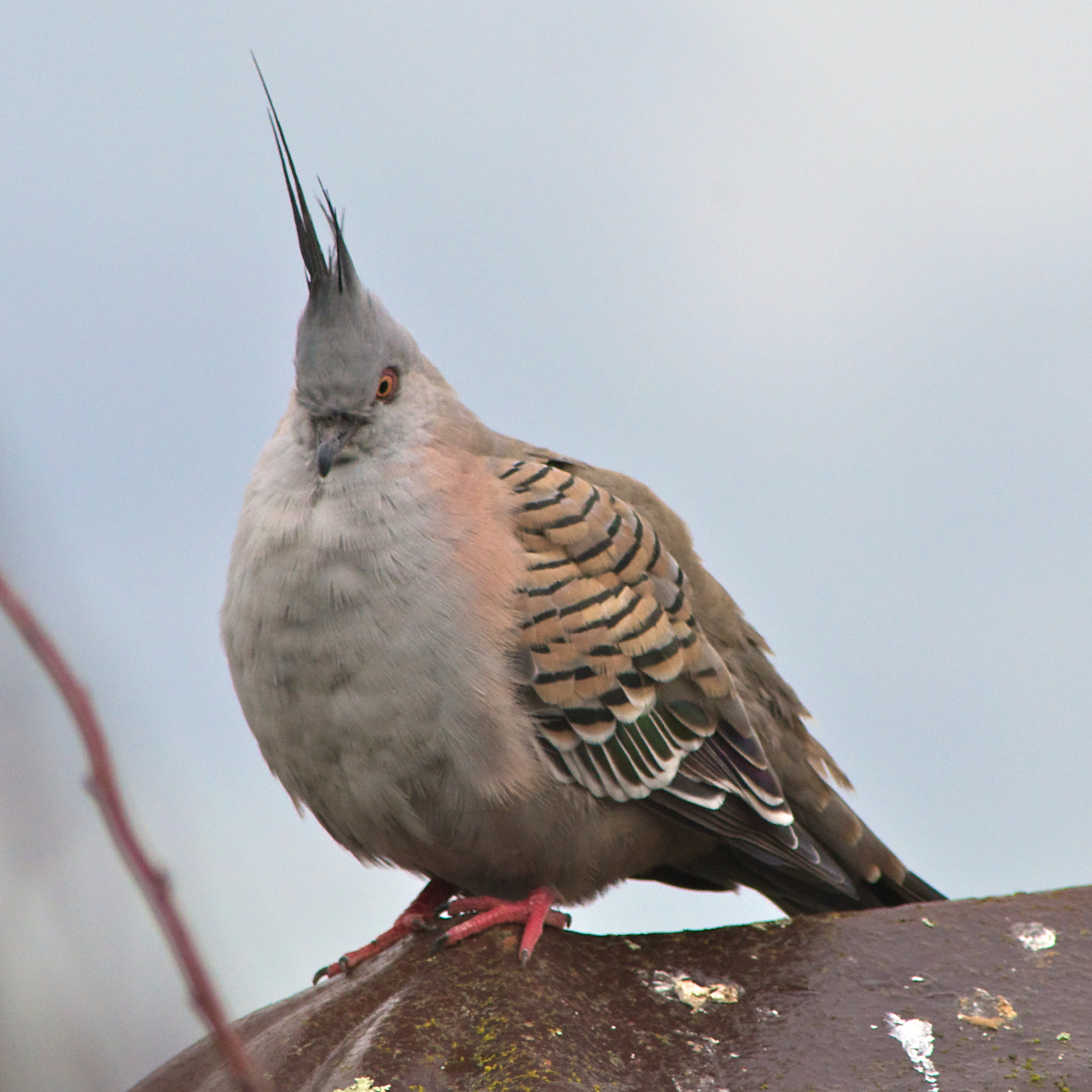 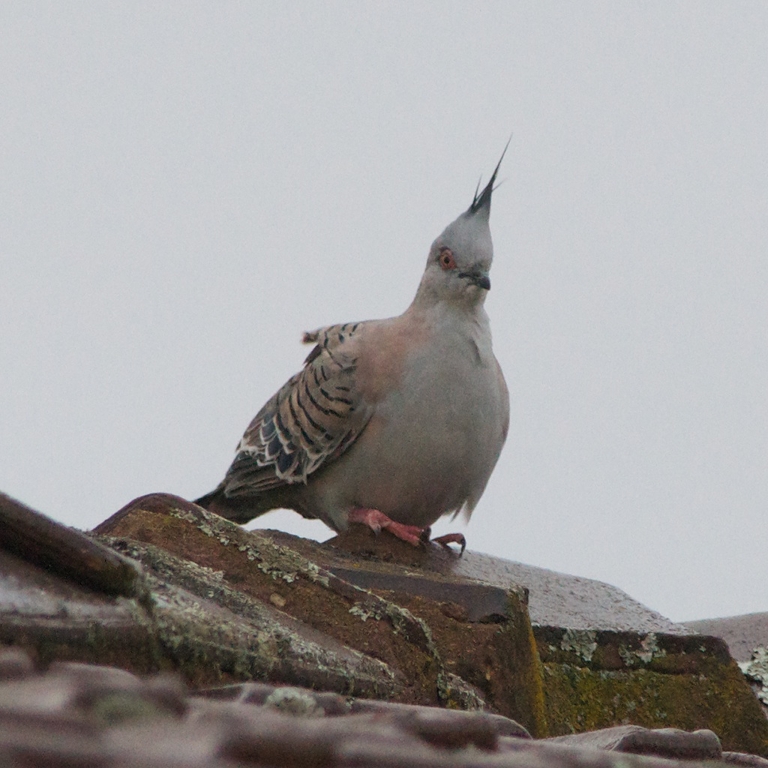 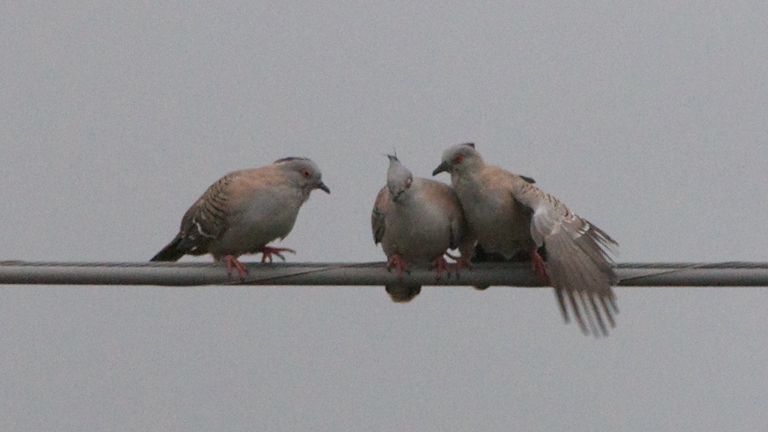  The Crested Pidgeon is
becoming so urbanised, it can be seen in suburban shopping centre
carparks. Like the Australian Bronzewing, they have reflective
coloured wing feathers, with a interference pattern which is strongly
dependent on viewing angle (Nikkor
70-300mm f/4-5.6D-ED/
D90 April 2012).
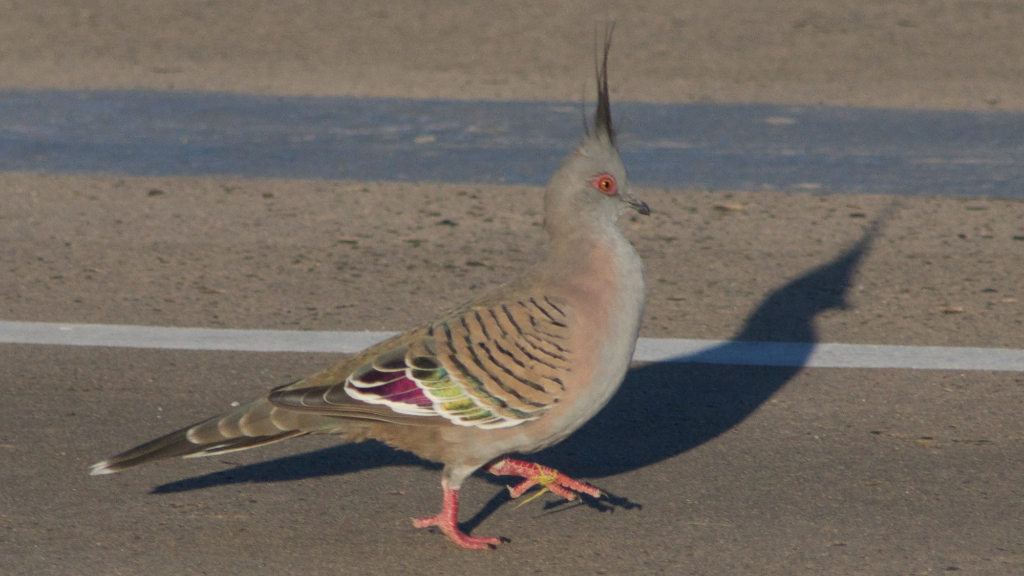 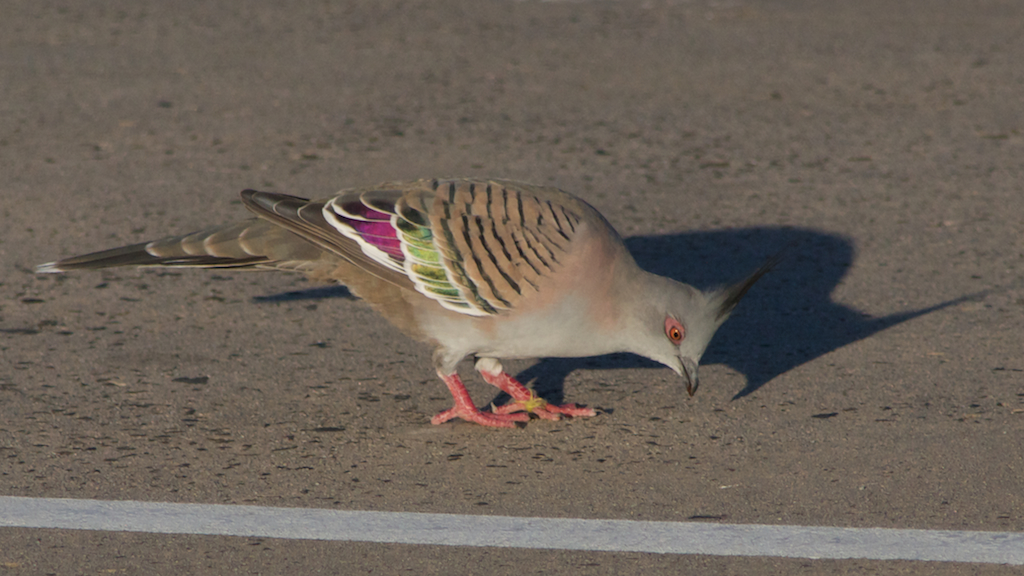 |
Indian Mynah |
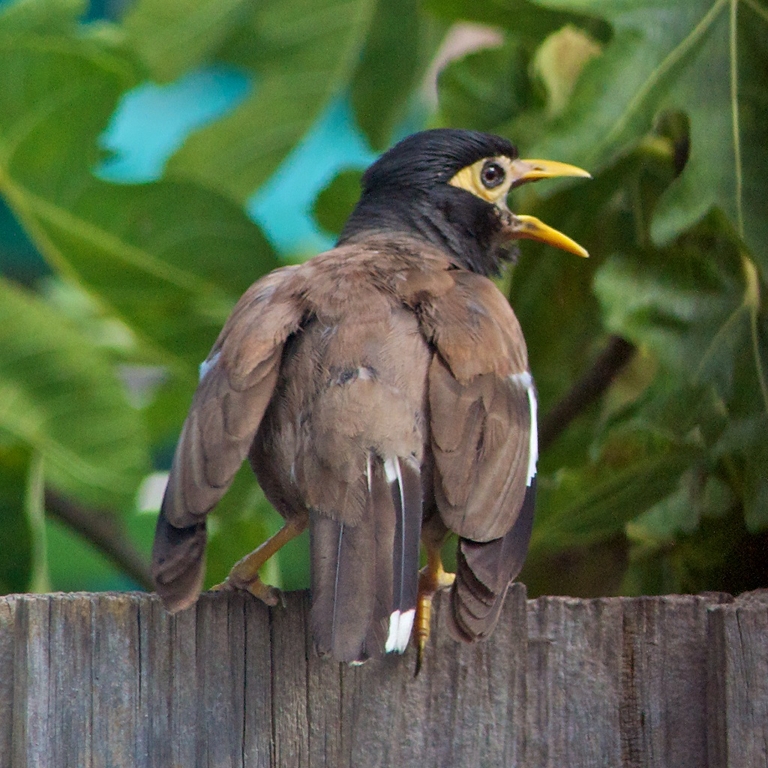 The
Indian Mynah is a well
established pest in Australian suburbs, frequently displacing less
aggressive native species. It is known to propagate mites and other
parasites (Nikkor 70-300mm D-ED/
D90 08/2011; 18/03/2012).
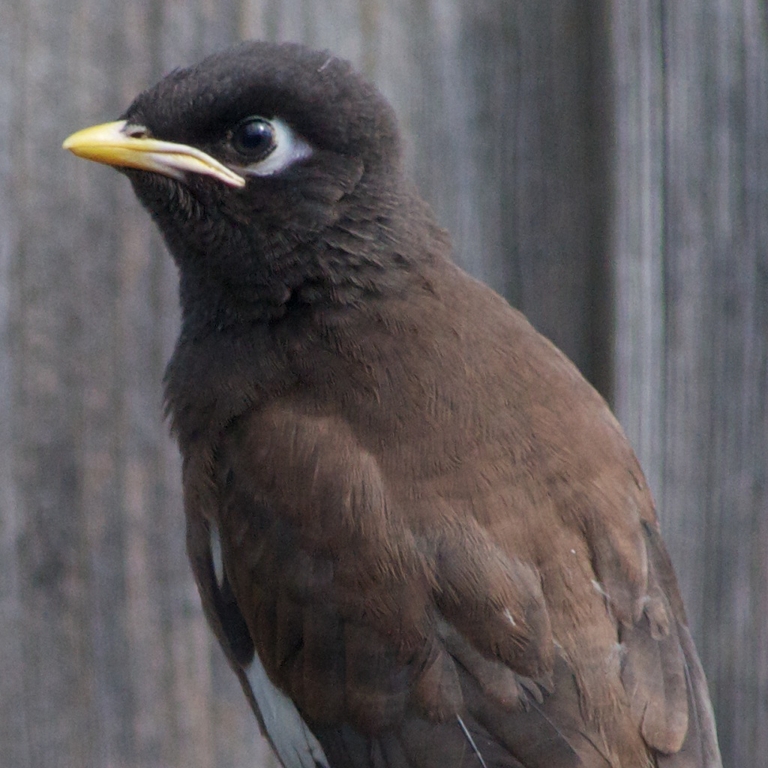 A juvenile Indian Mynah. Note
the short beak and different face colouration.
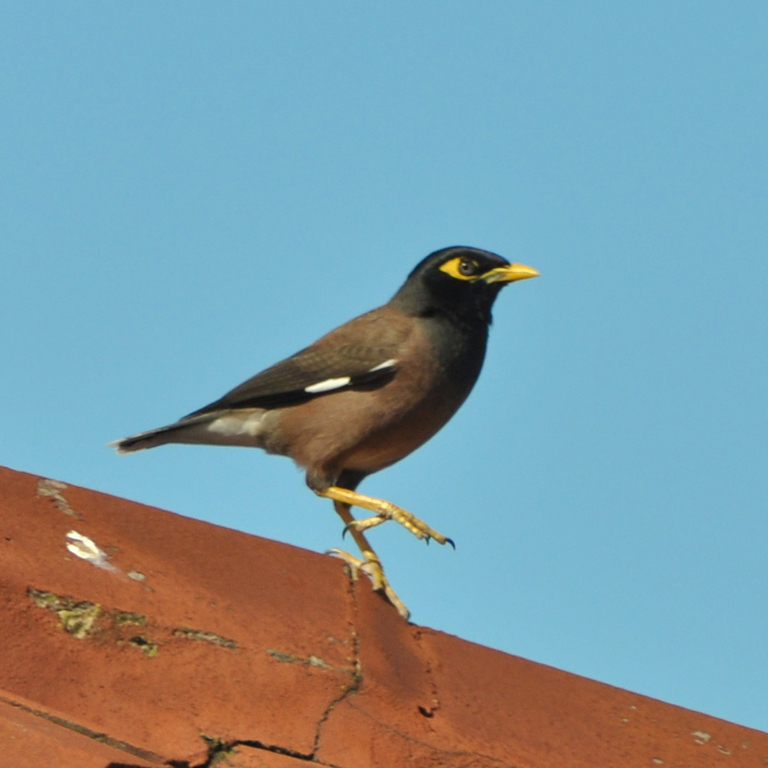 The
Indian Mynah is
easily distinguished by its characteristic walk.
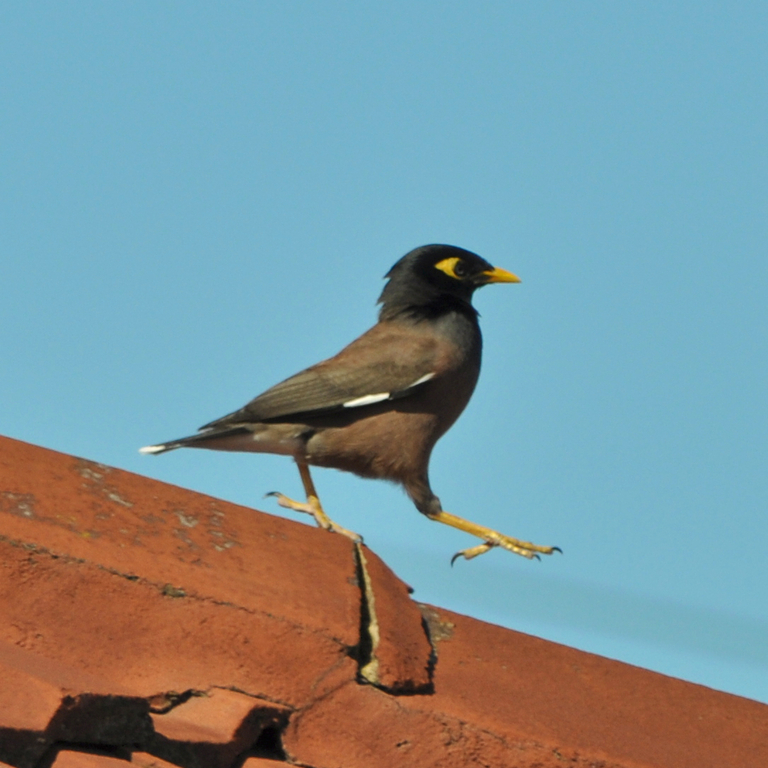 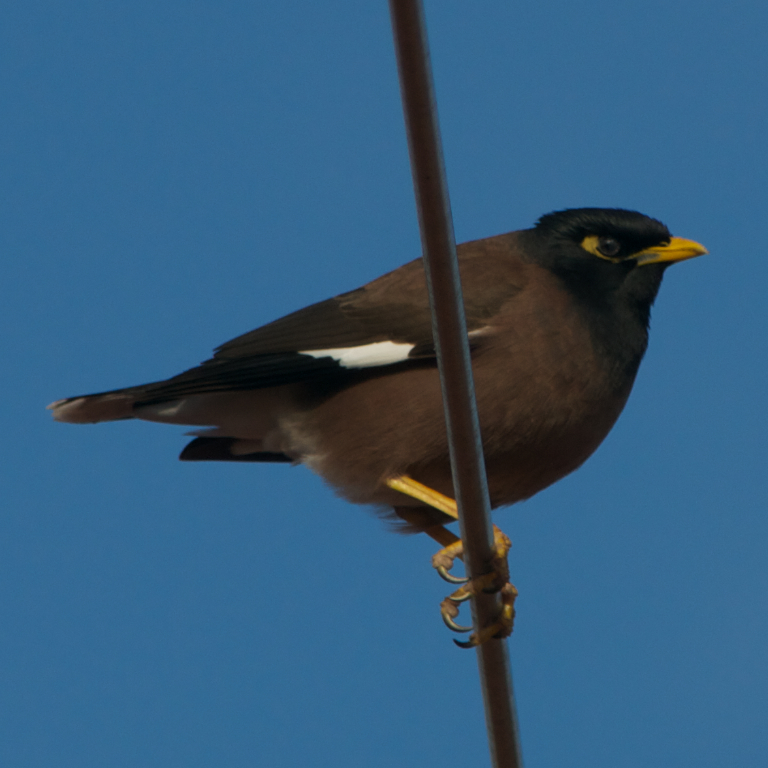 The Indian Mynah posing on a TV antenna (Nikkor 70-300mm D-ED/ D90 April, 2012). 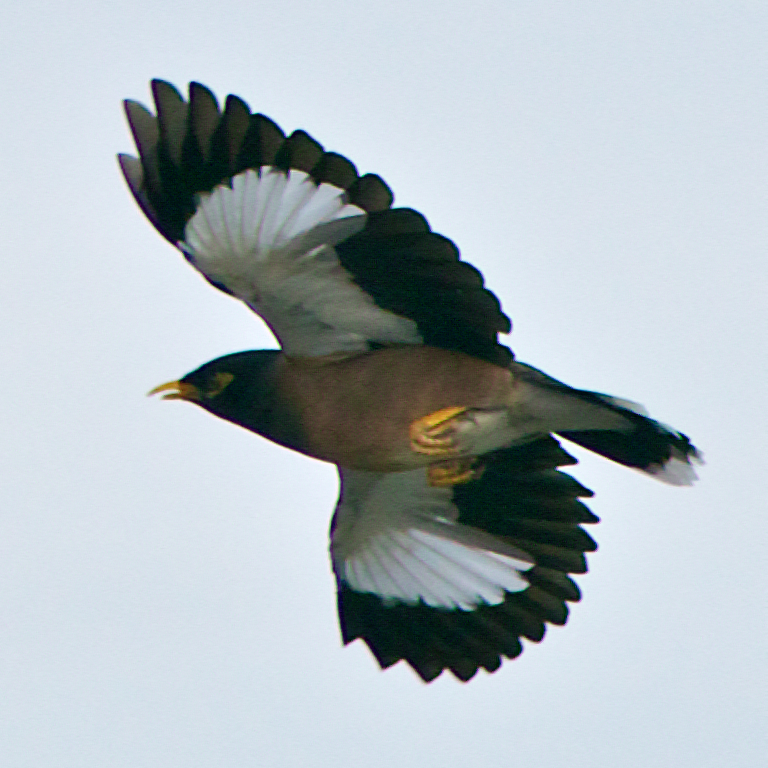 The Indian Mynah in flight (Nikkor 70-300mm D-ED/ D90 April, 2012). |
Red Wattlebird |
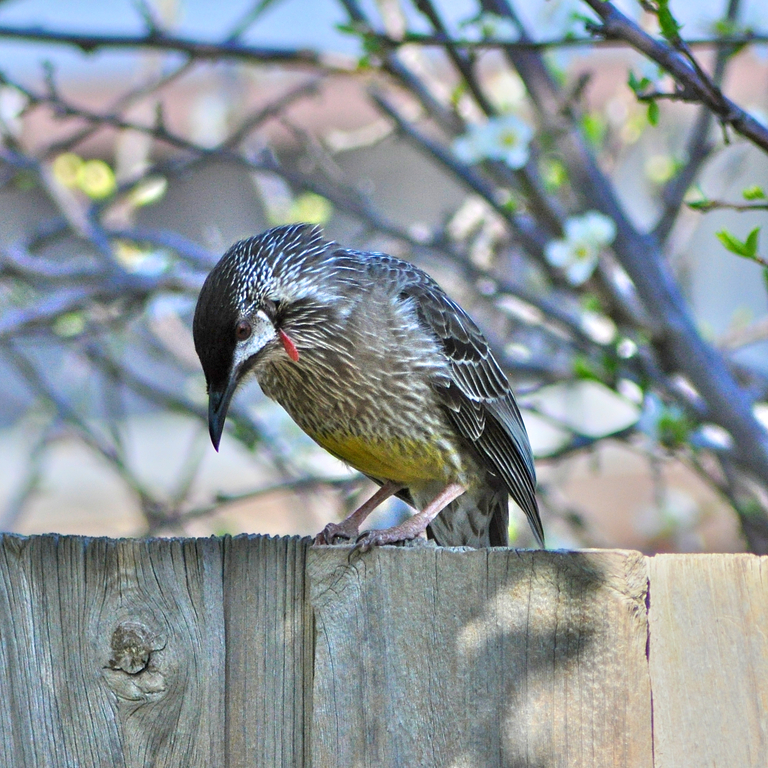 The Red Wattlebird is a large
(up
to 15 in) and very loud native honeyeater. This superb example sat on a
fence long enough to permit multiple images to be captured, a very
unusual circumstance given how hyperactive this species usually is
(70-300mm D-ED/ D90 08/2011).
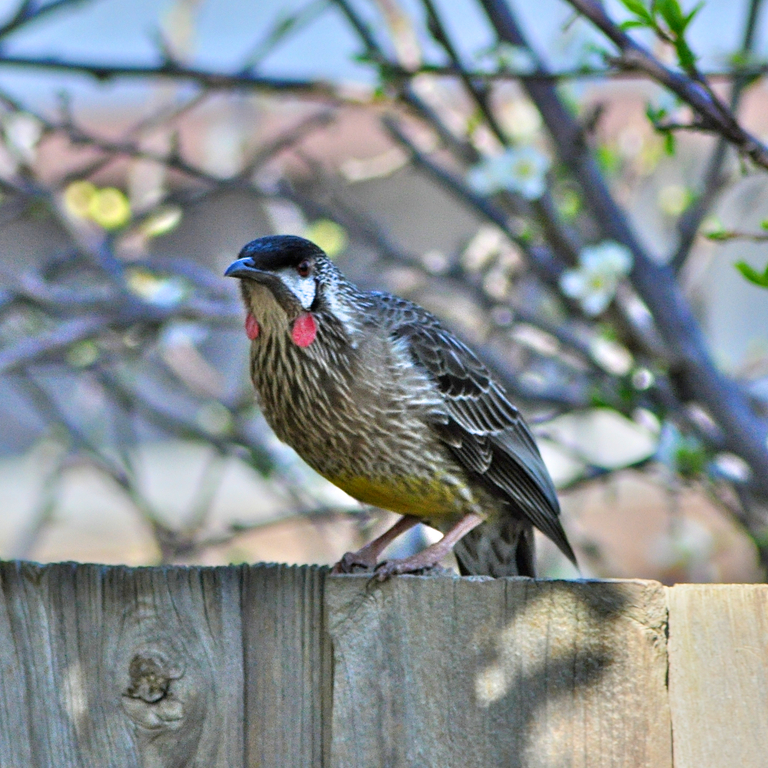 Red Wattlebird (Nikkor
70-300mm D-ED/ D90 08/2011).
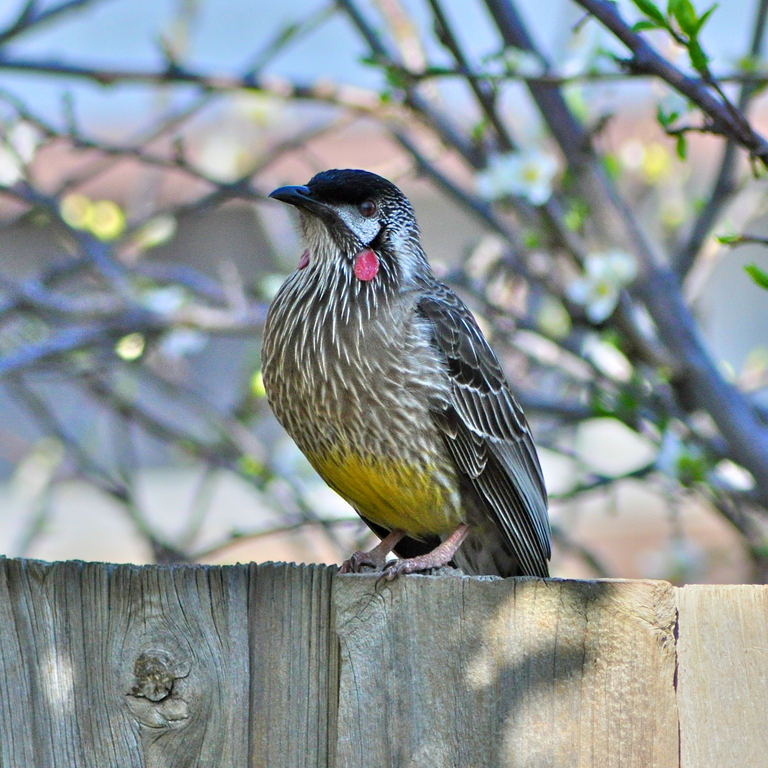 Red Wattlebird (Nikkor
70-300mm D-ED/ D90 08/2011).
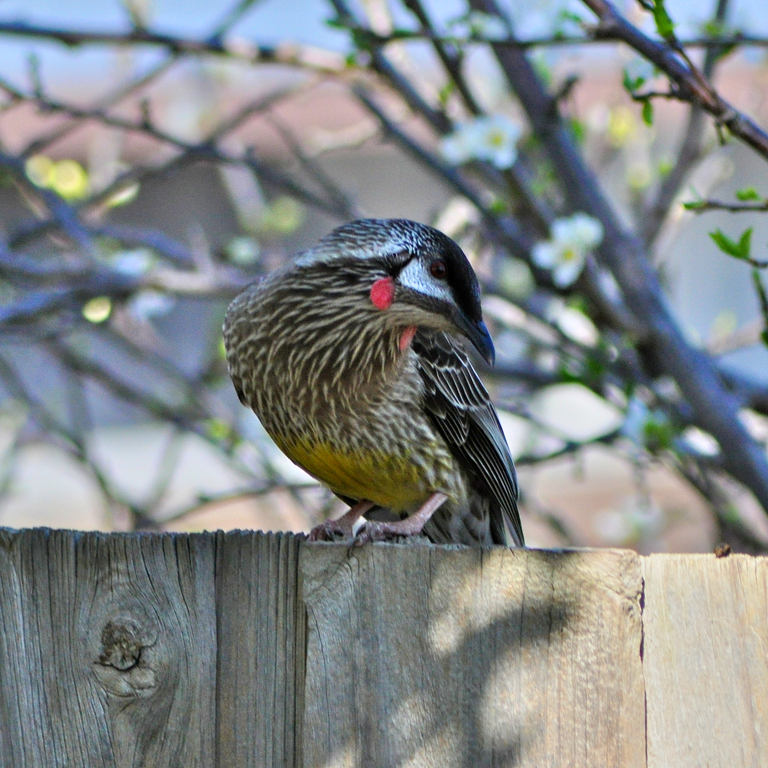 Red Wattlebird (Nikkor
70-300mm D-ED/ D90 08/2011).
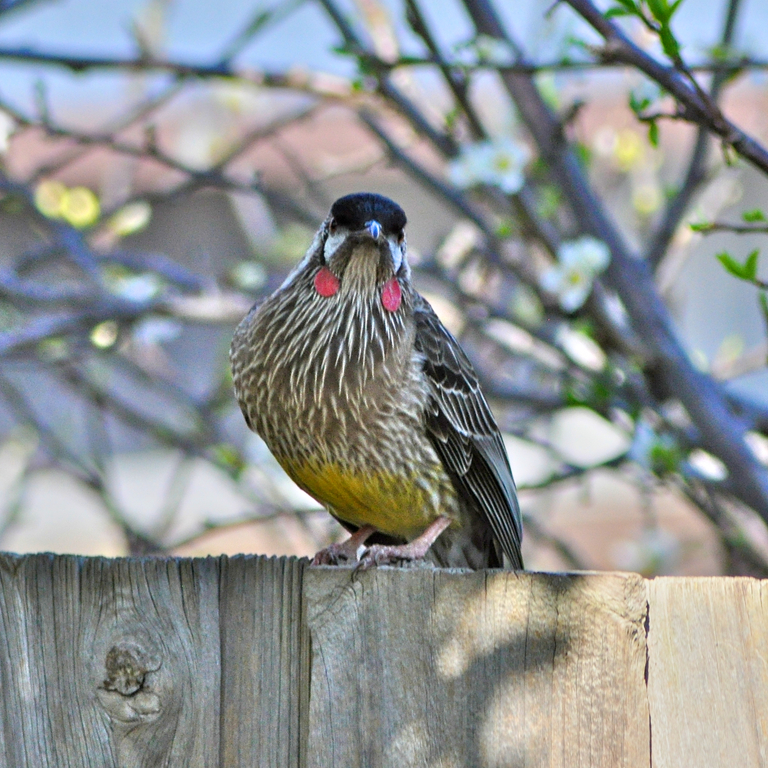 Red Wattlebird (Nikkor
70-300mm D-ED/ D90 08/2011).
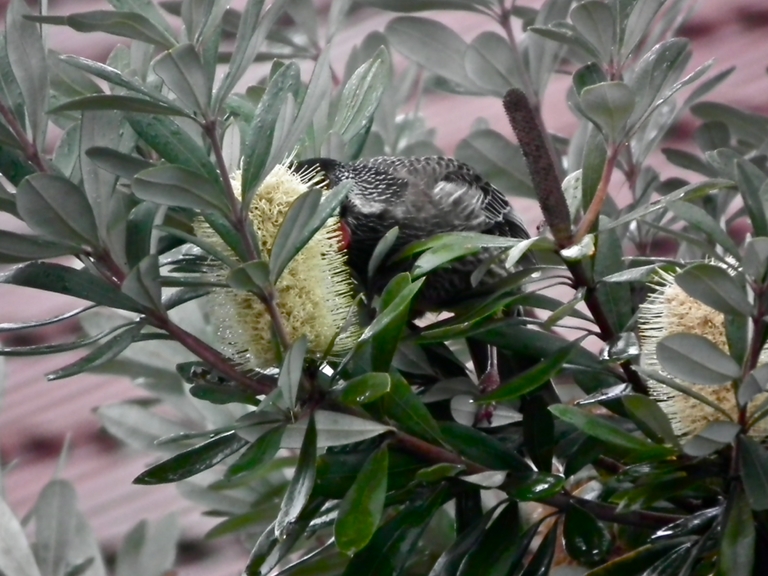 Above, below: a Red Wattlebird feeding on
blossoms of the Banksia integrifolia.
Lighting conditions were especially poor (HS10 06/2011).
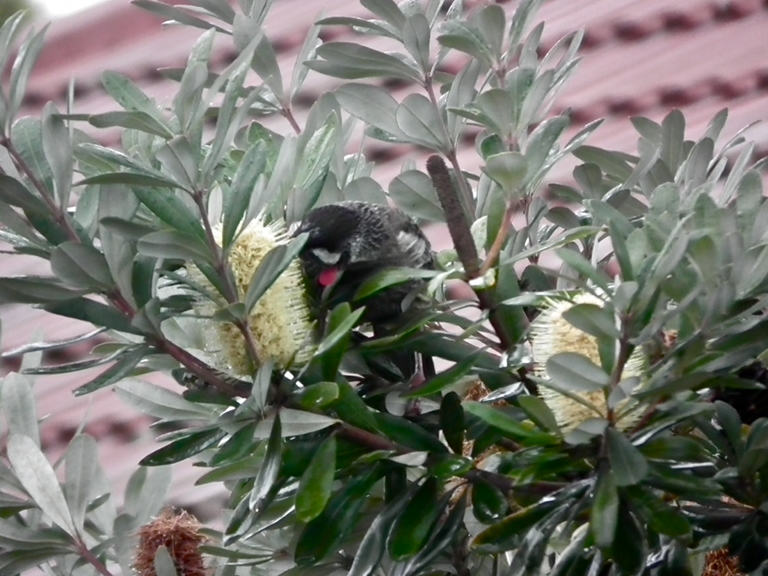 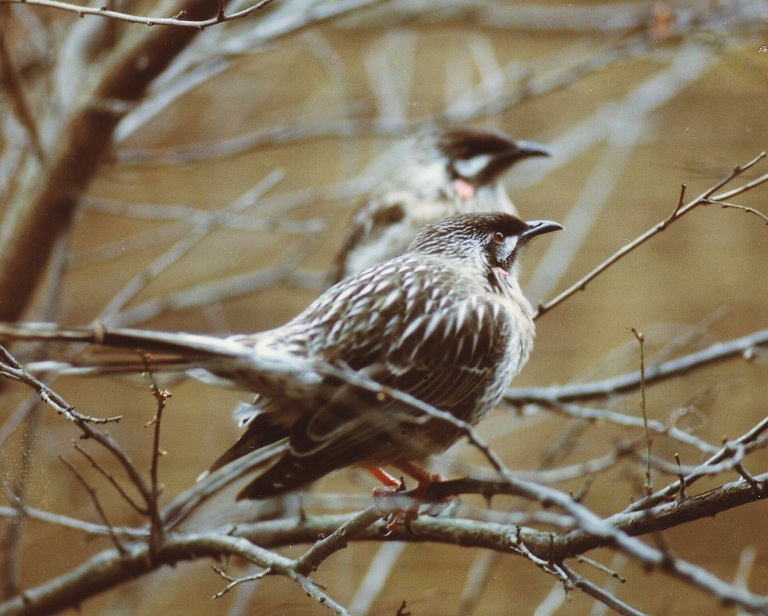 This
pair of young specimens
paid me a noisy very early morning visit in spring, 1997, and were
photographed in return (Mamiya 645/1000s 210 mm f/4.0 lens;
NB poor lighting
resulted in narrow field of focus).
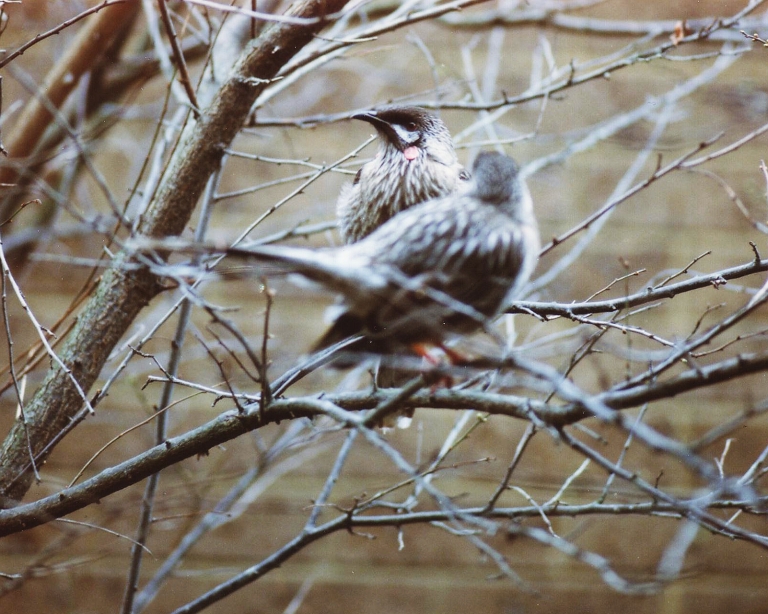 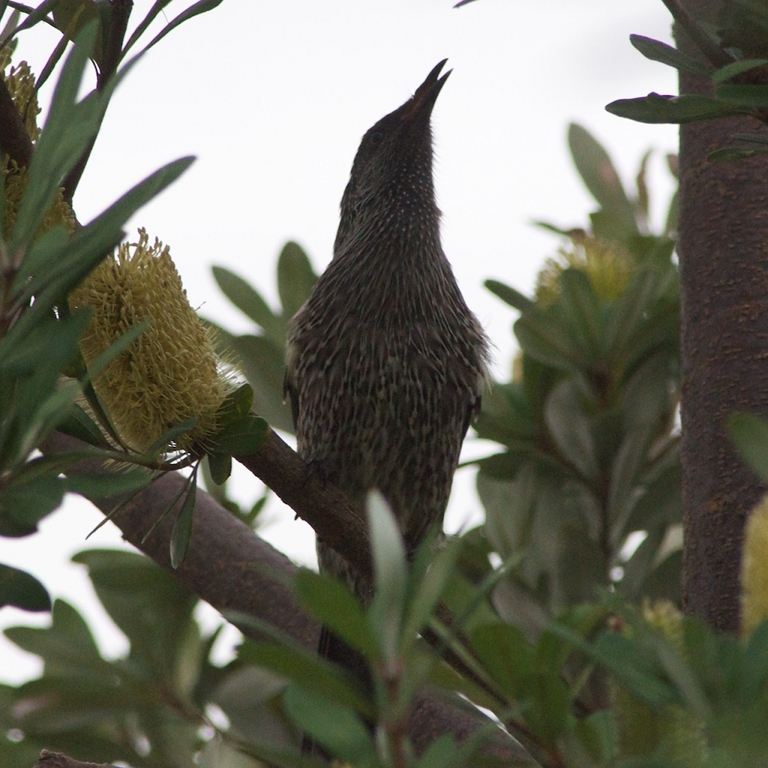 The
Brush Wattlebird is a smaller relative of the Red Wattlebird, but no
less
noisy. Above an example warbling loudly, below feeding and observing (Nikkor
70-300mm D-ED/ D90 08/2011).
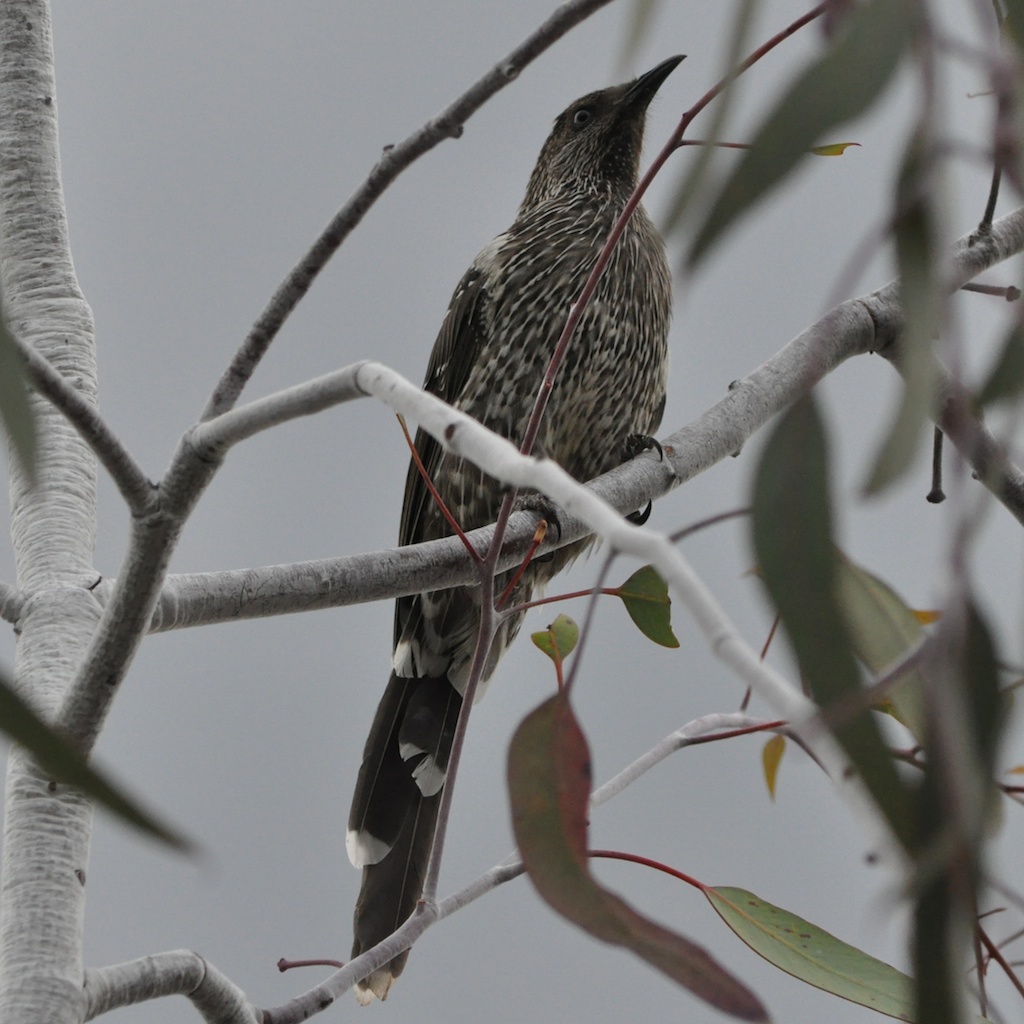 |
Common Blackbird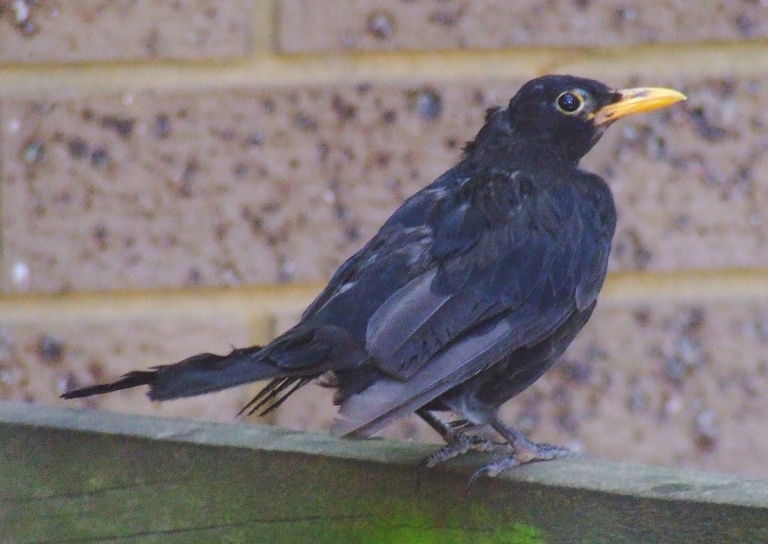 The Common Blackbird is an introduced pest in
Australia, and is a frequent sight in the suburbs. This is a male with
its characteristic black plumage.
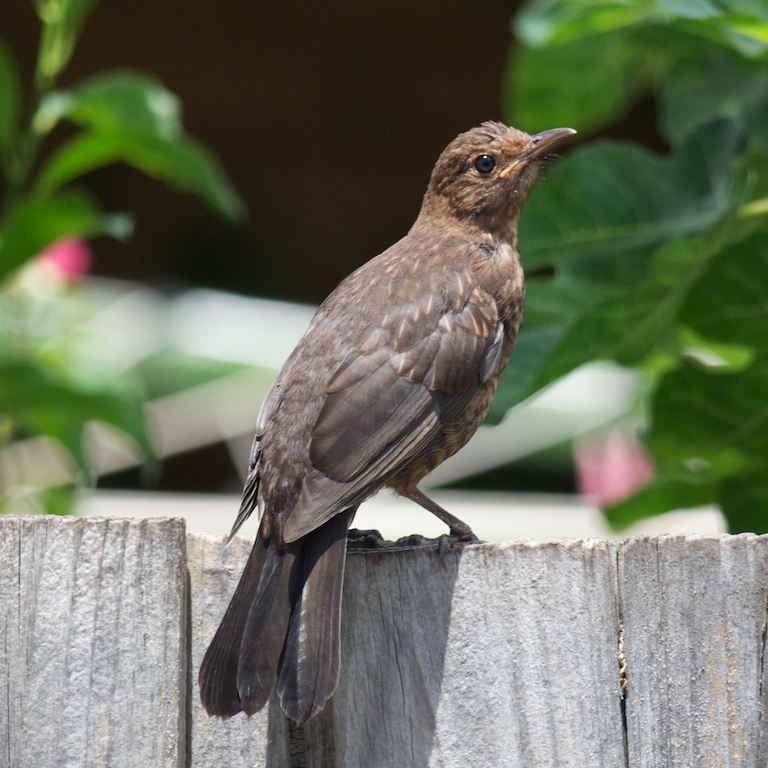 A female Common Blackbird
with somewhat tatty plumage (Sekor C 300mm f/5.6N ULD / D90).
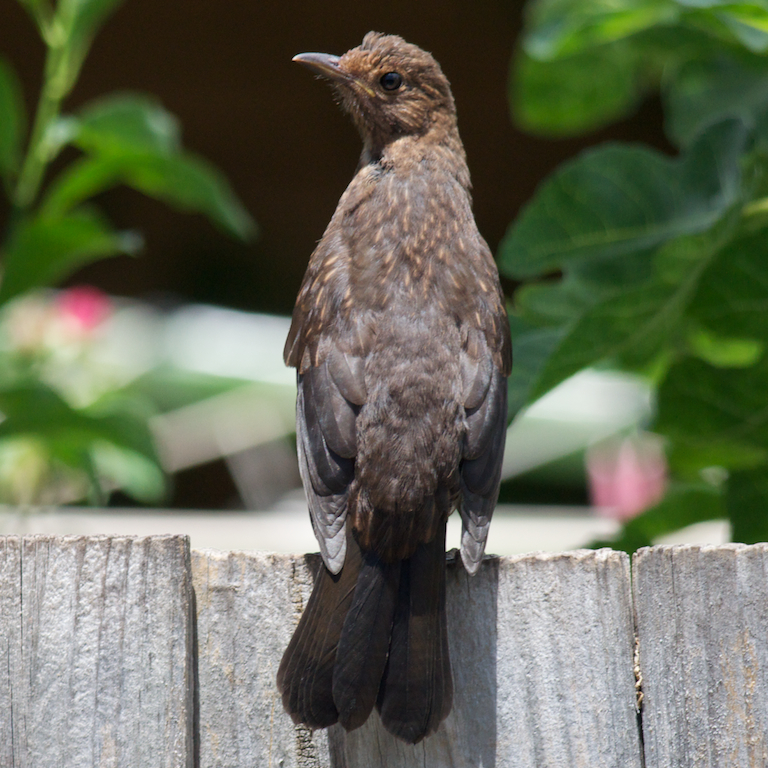 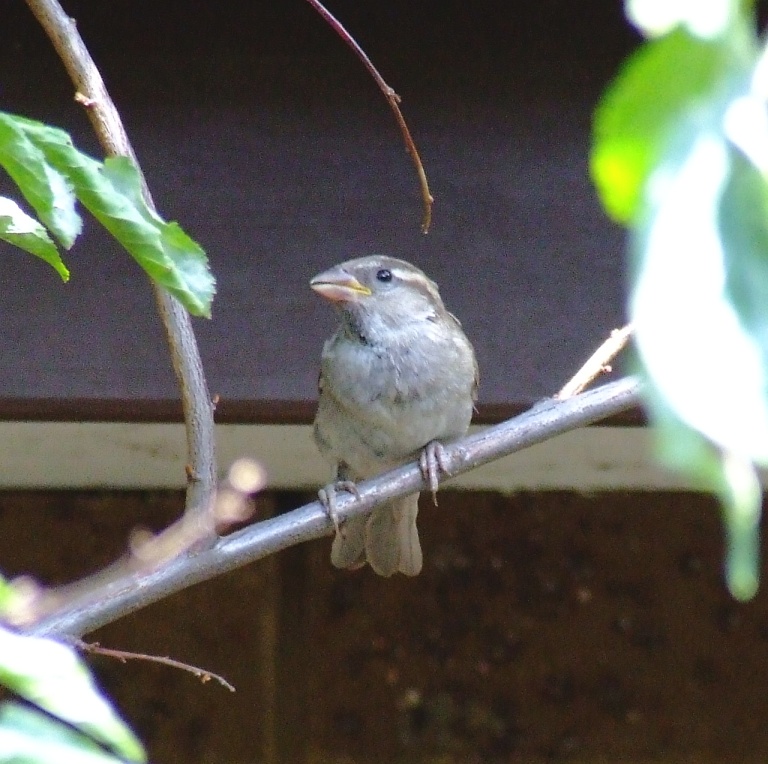 The ubiquitous House Sparrow, common throughout Australian suburbia, a truly globalised pest. |
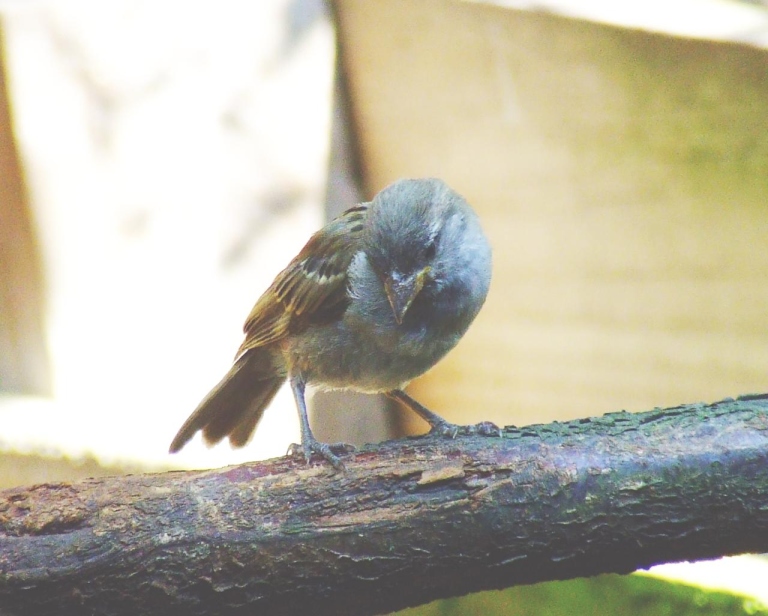 Female House Sparrow. |
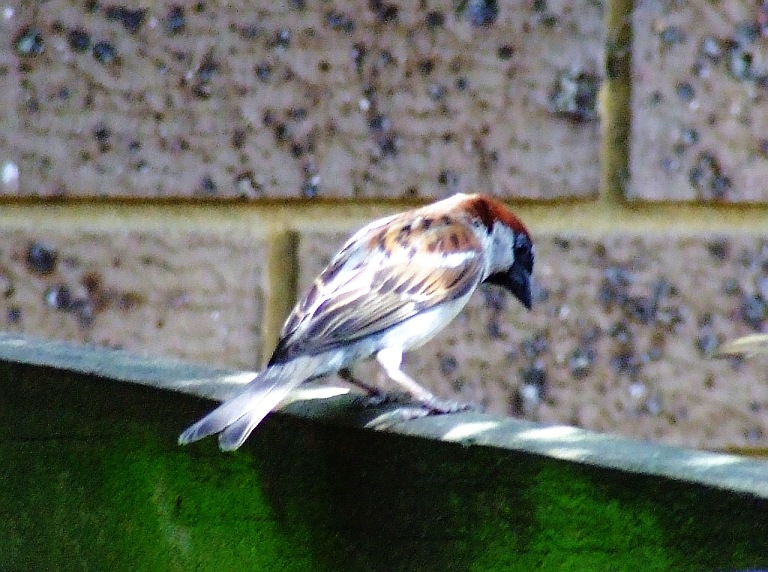 Male House Sparrow. |
|
The Grey Butcherbird (Cracticus
torquatus) is an
increasingly common sight in
Australian
suburbs, and is known for its distinctive call.
This immaculate and well grown juvenile made a morning visit in
September, 2013 (D90
with Sigma AF 400mm f/5.6 APO).
 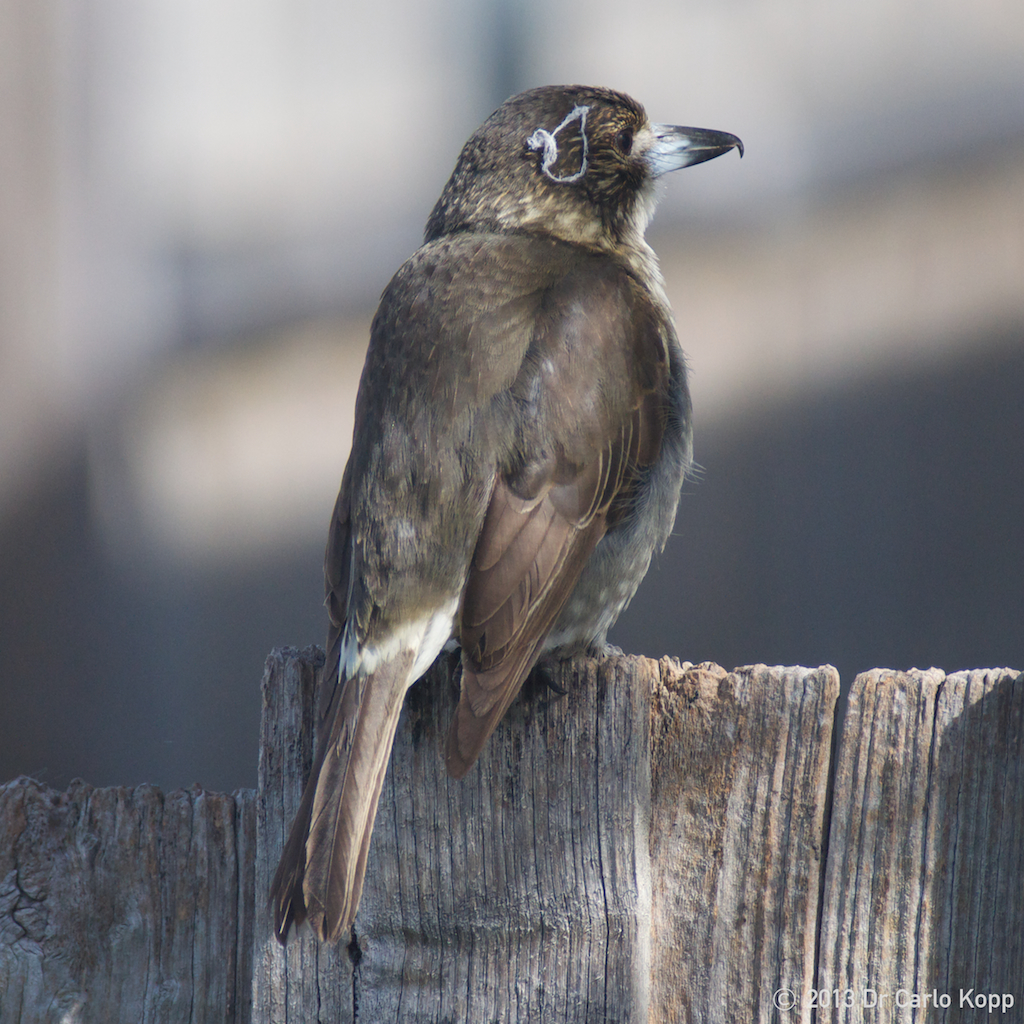 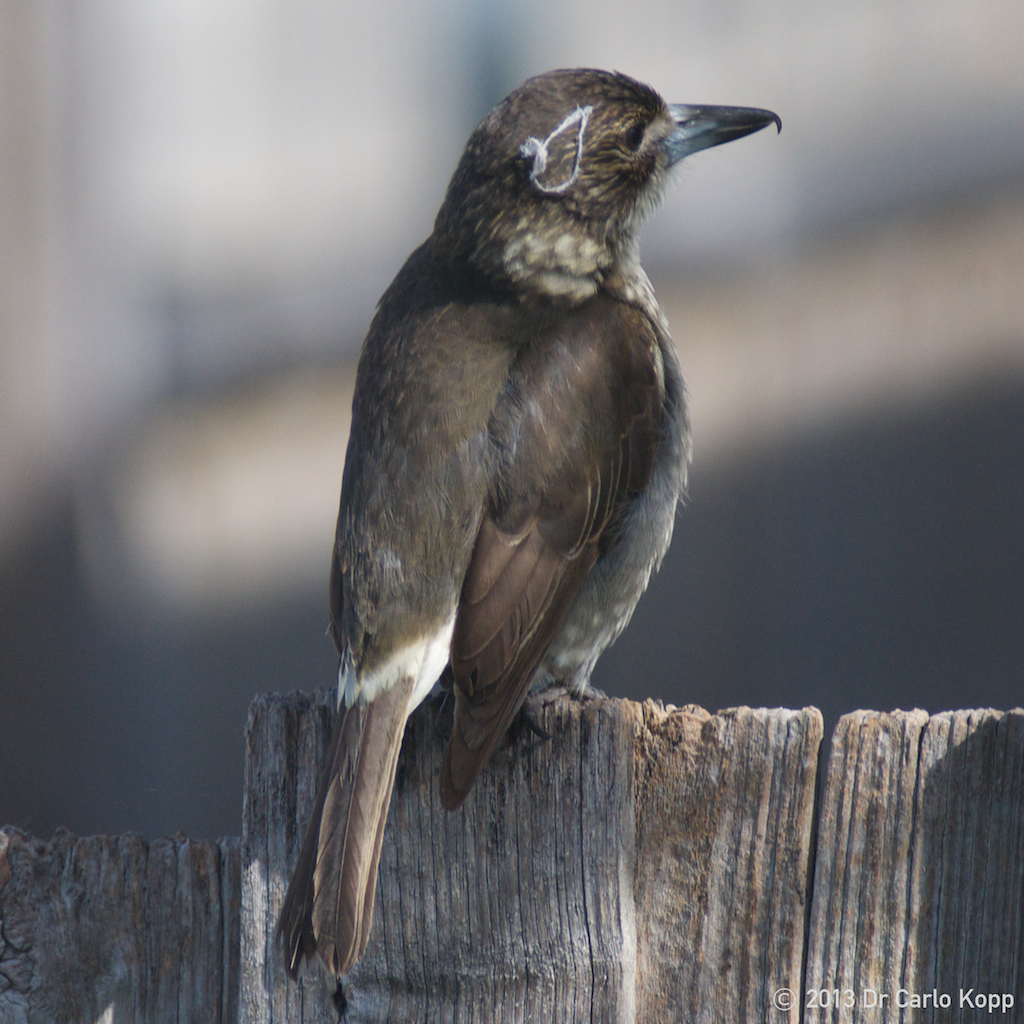  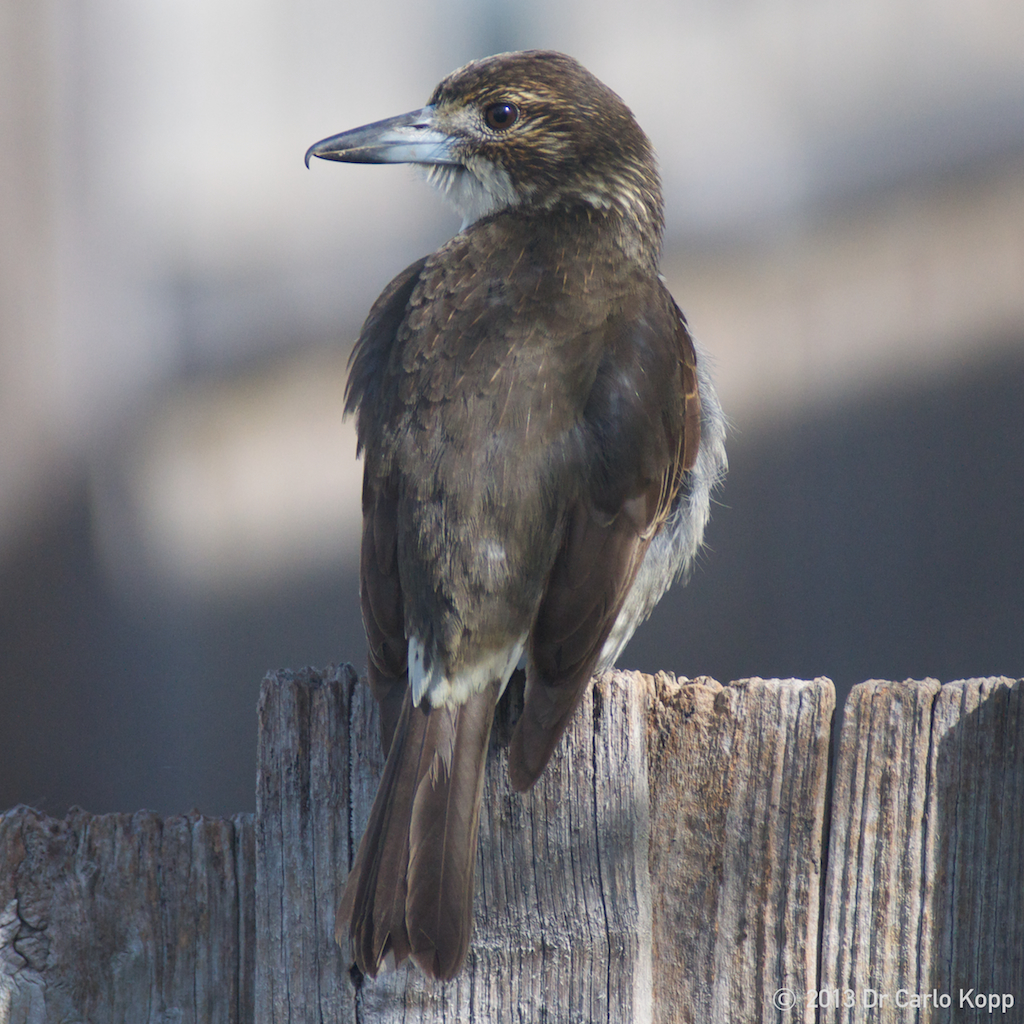 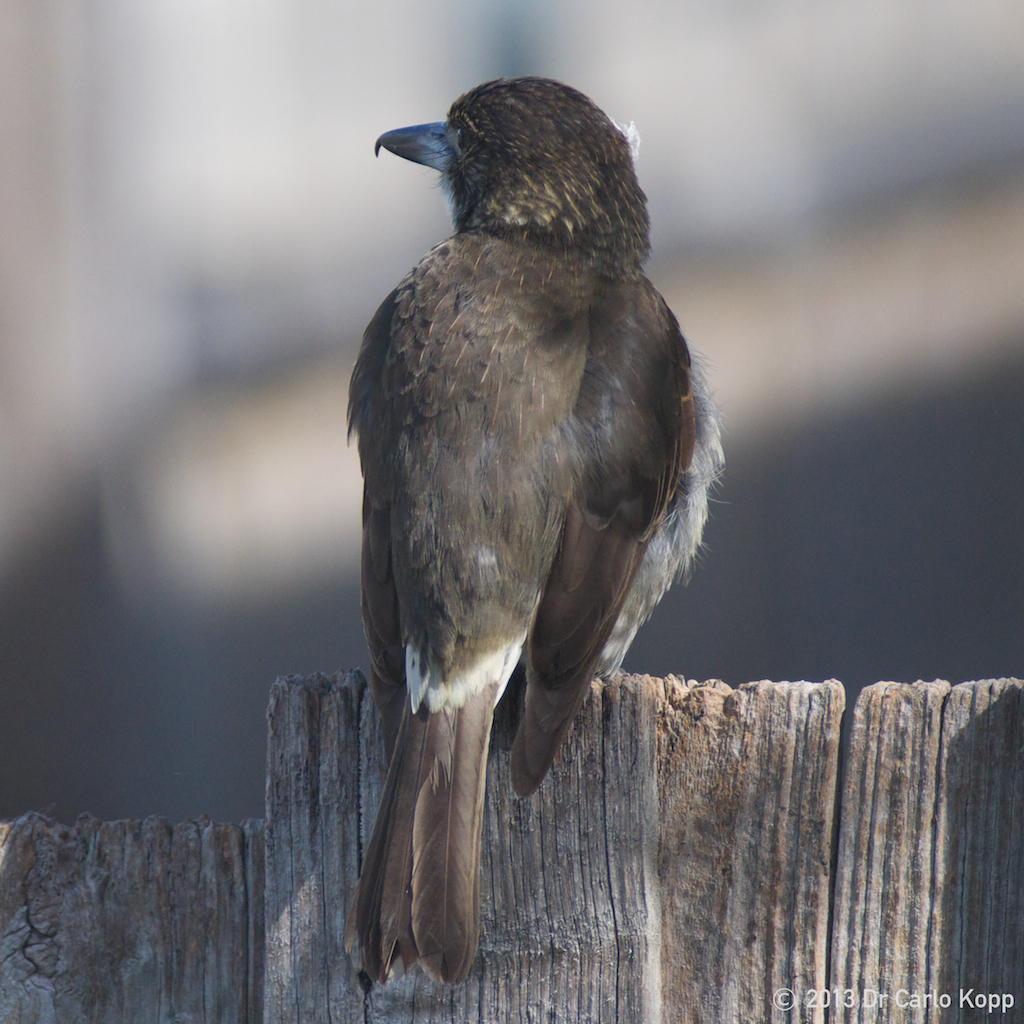 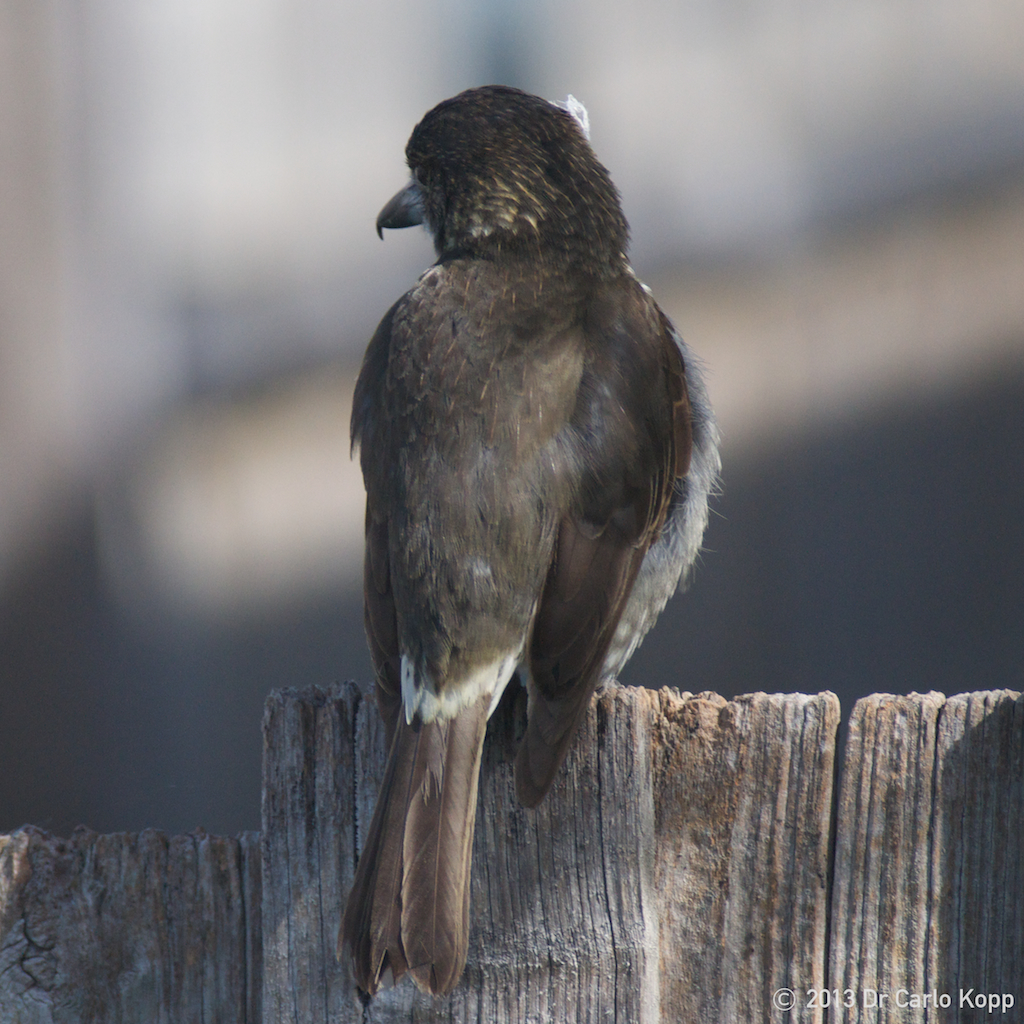 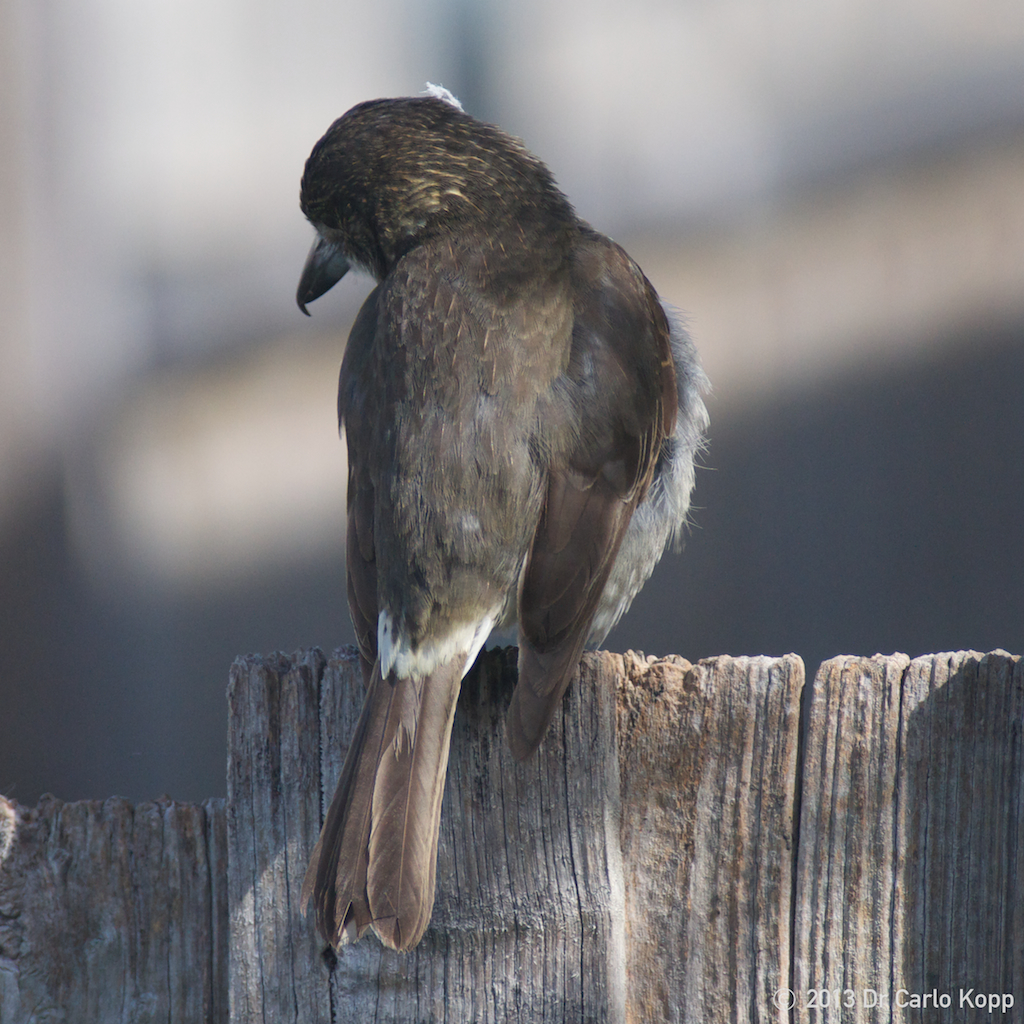 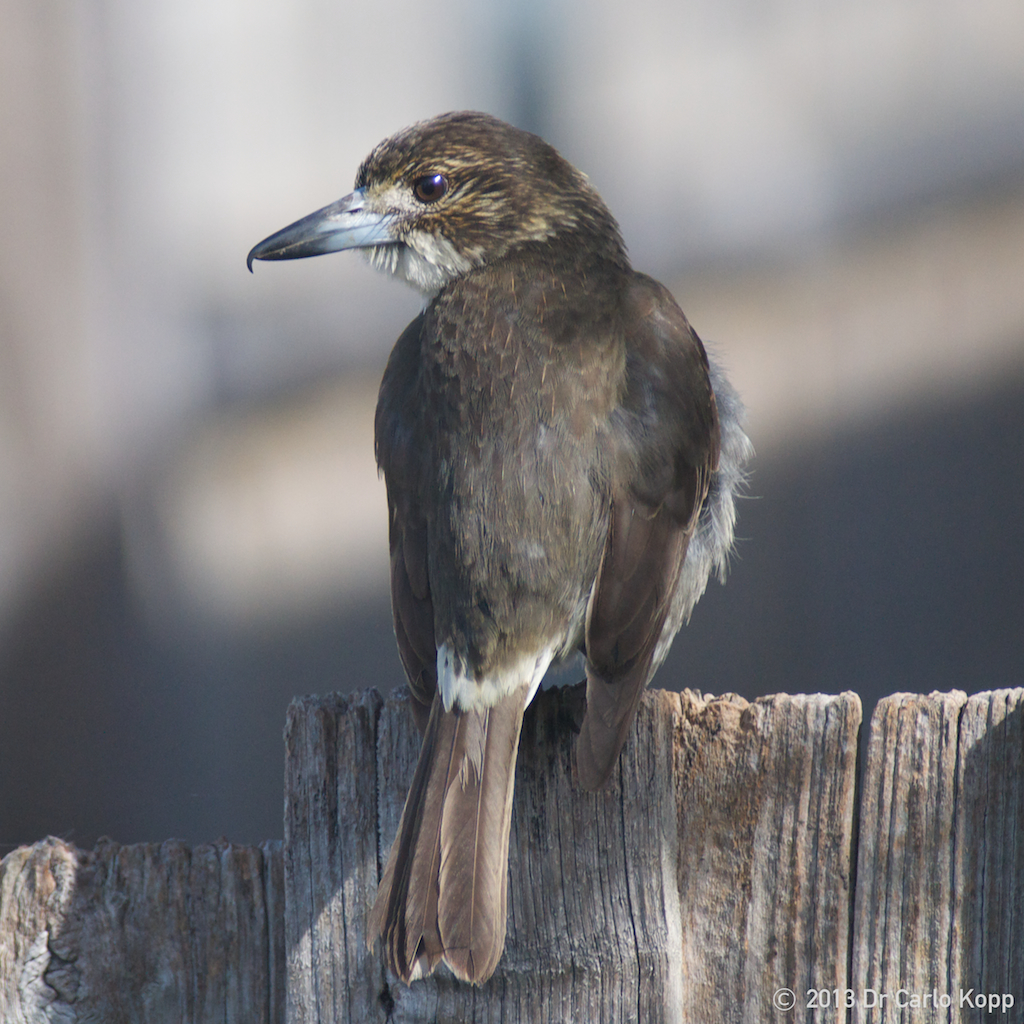 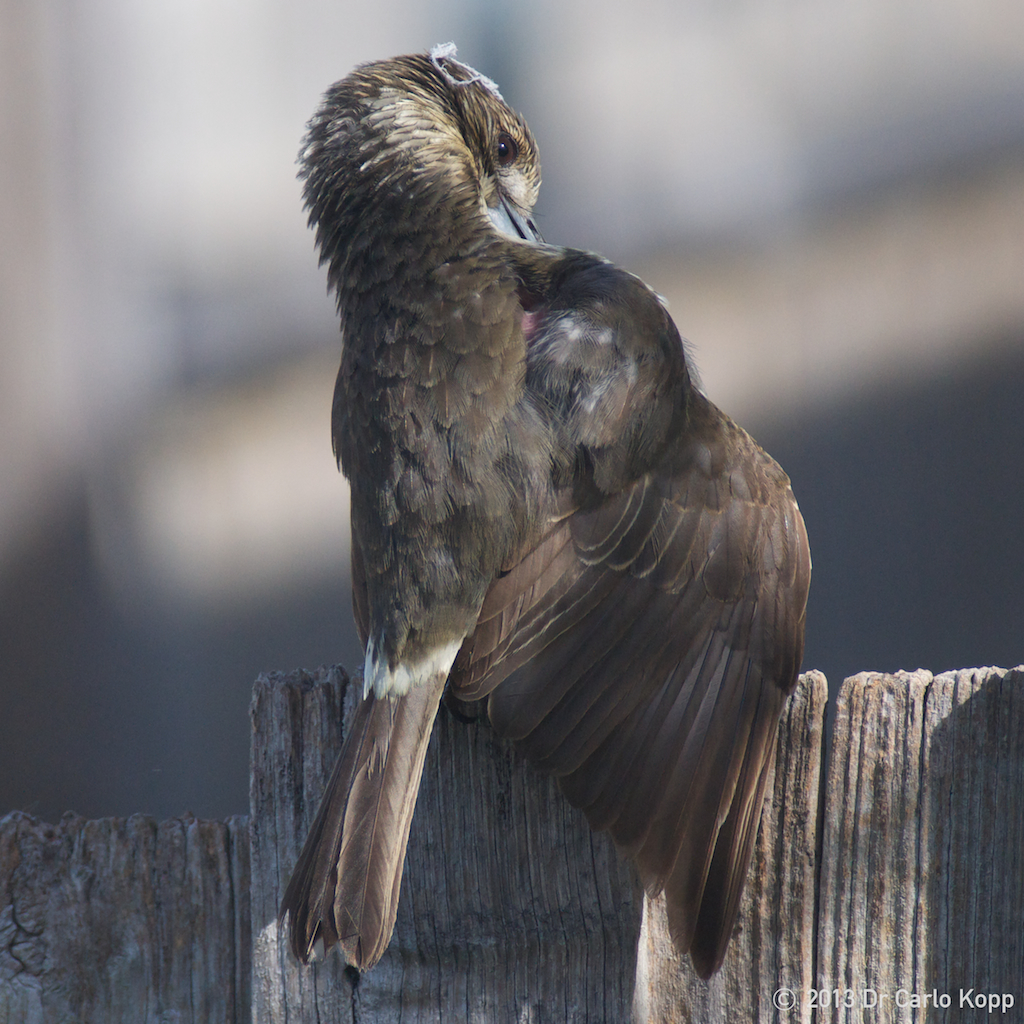  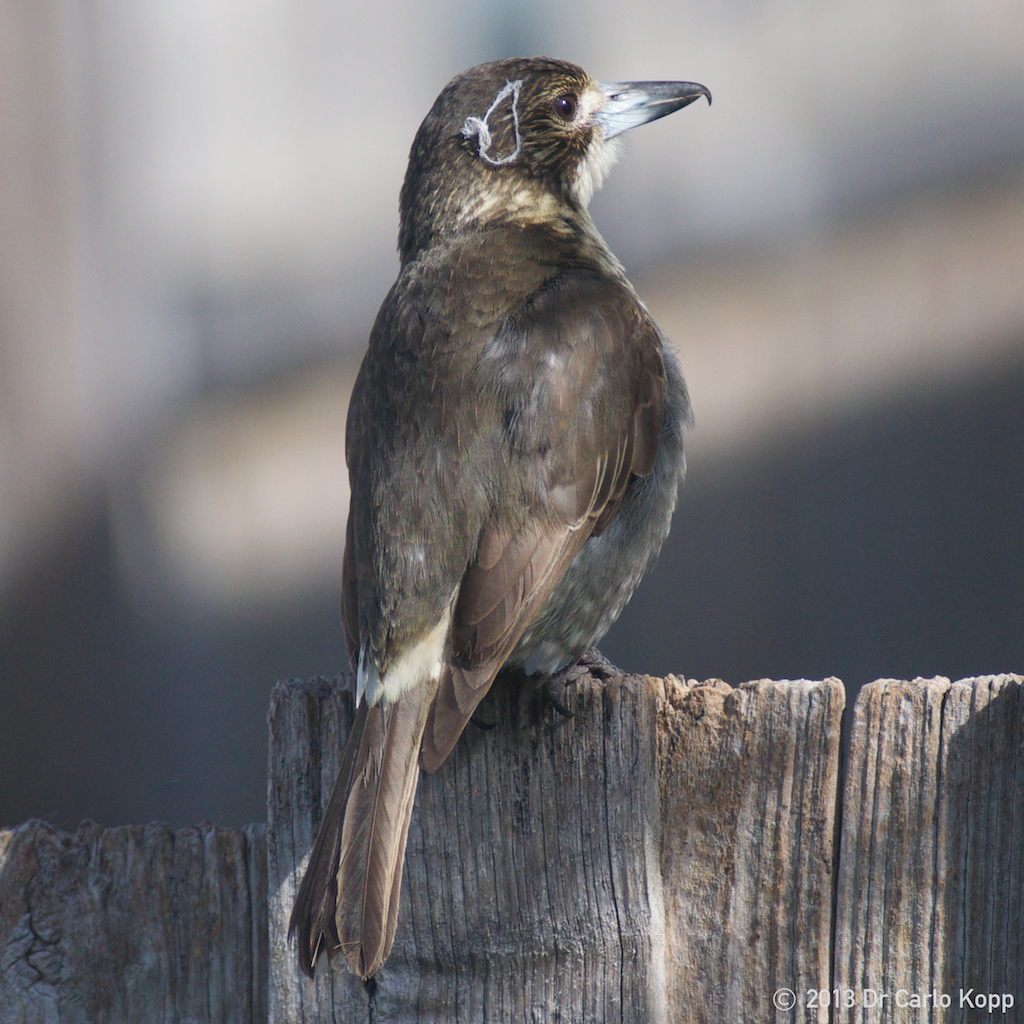 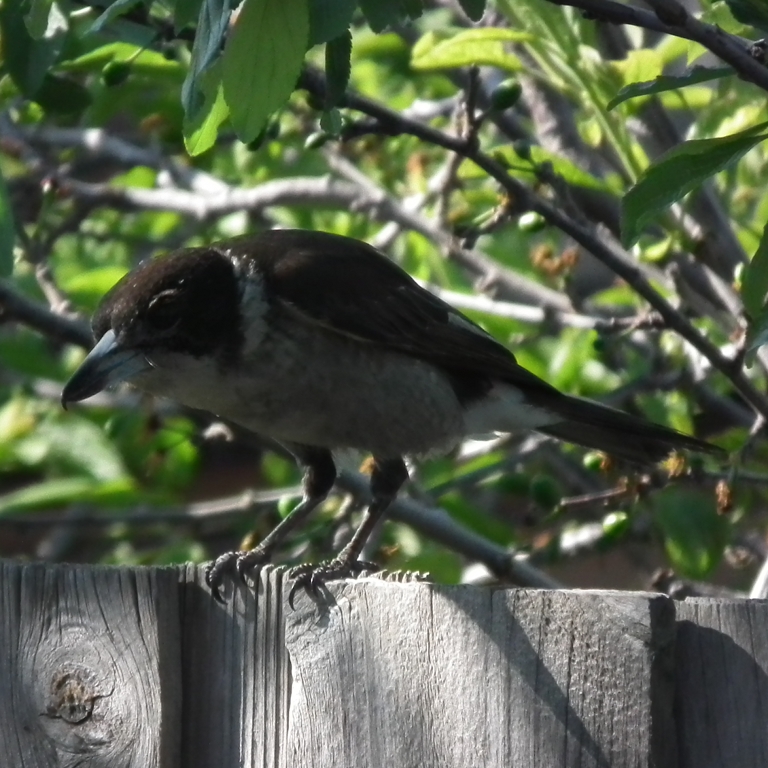 An
immaculate adult Grey Butcherbird posing
for the camera in Spring, 2010 (Fuji
HS10
October,
2010).
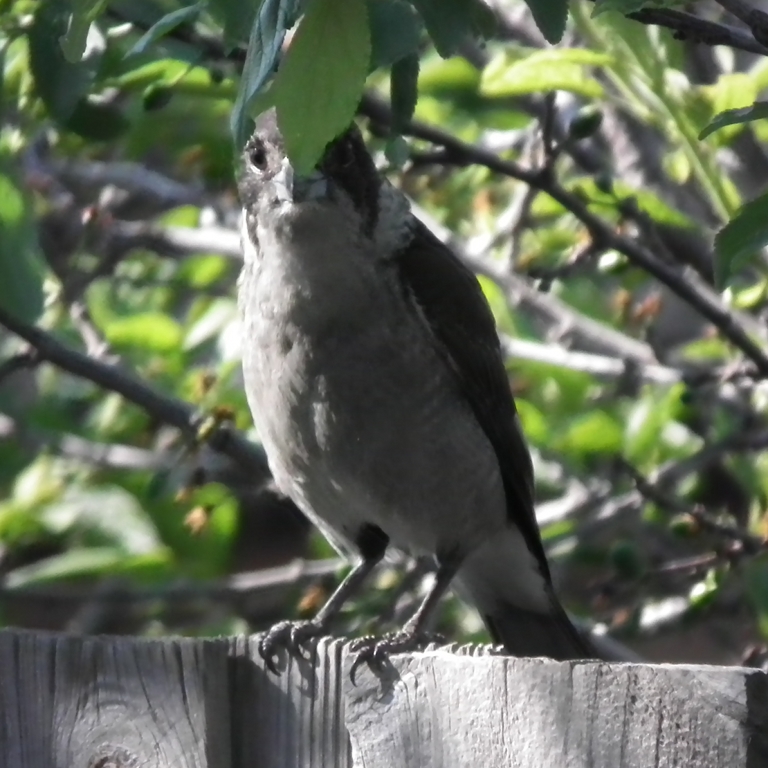 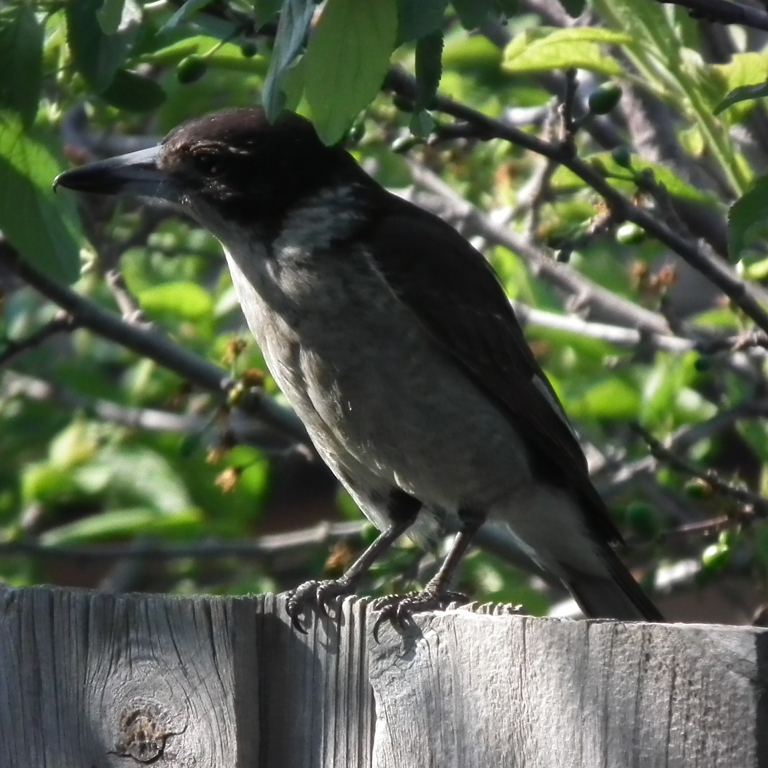 |
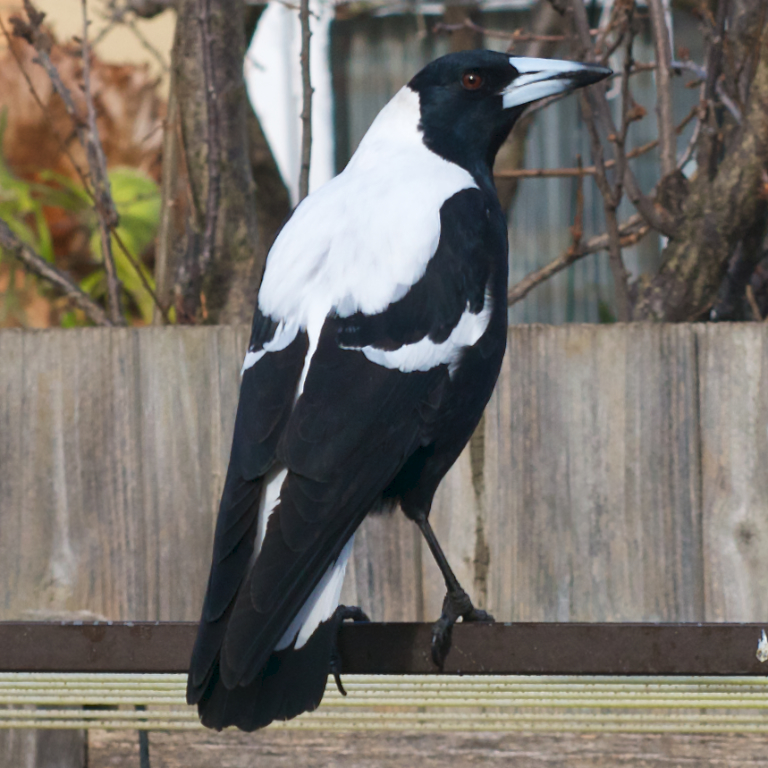 Magpie photographed in June, 2012
(Nikkor 50mm f/1.8D /
D90).
|
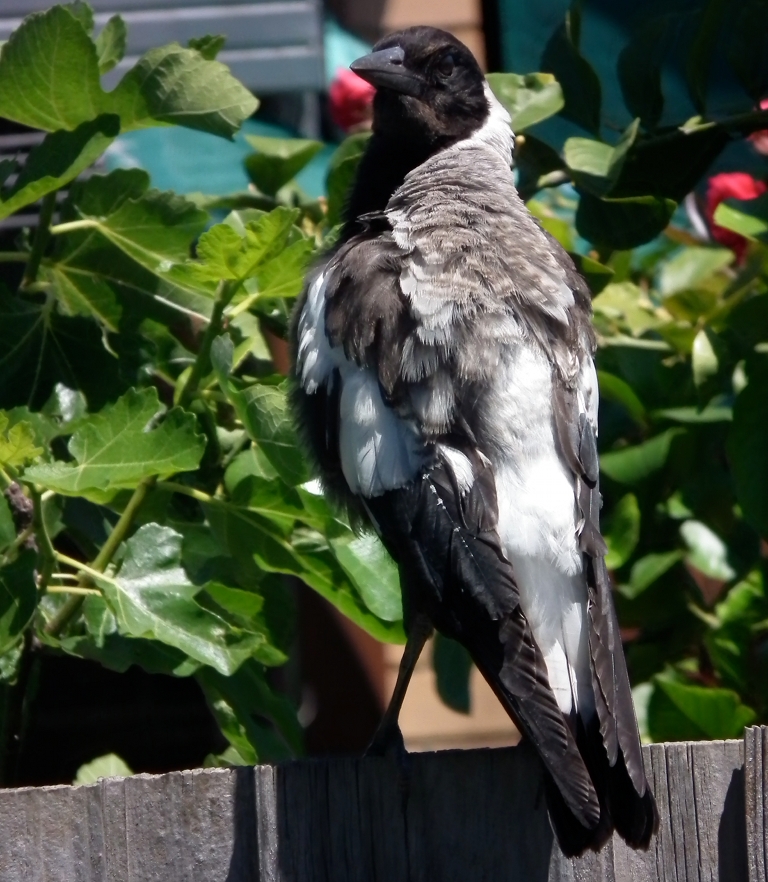 This juvenile Magpie, despite being almost adult size, insisted upon being fed by its parents, and was observed being fed (Fuji HS10 November, 2010). 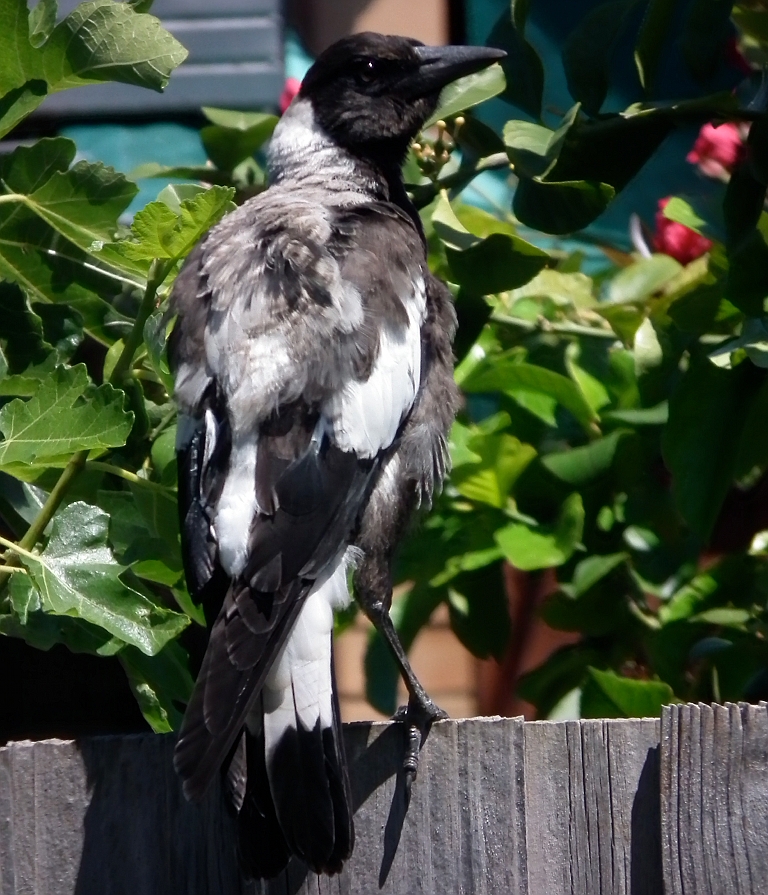 |
Australian Raven |
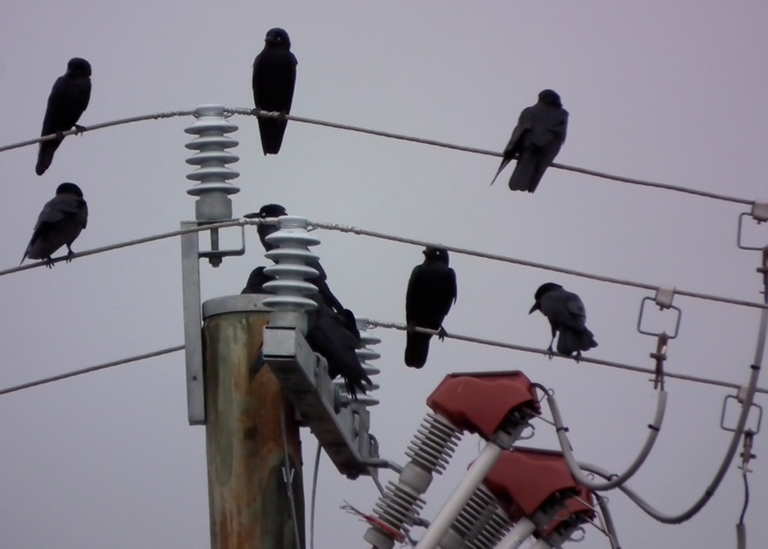 A murder of Australian
Ravens
perched on a transformer pole in Noble Park (Fuji
HS10
May,
2010).
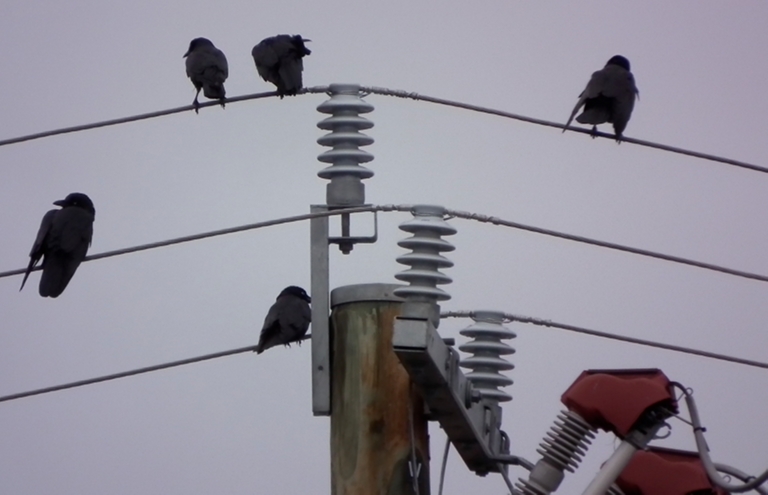 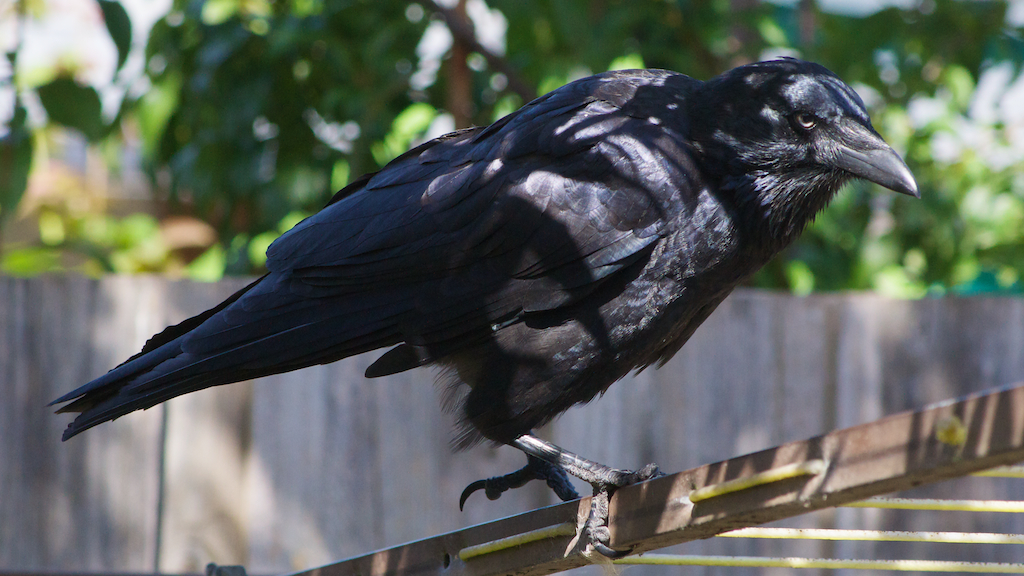 An Australian Raven in Noble
Park. These are intelligent and highly inquisitive birds (Nikkor
70-300mm f/4-5.6D-ED/ D90).
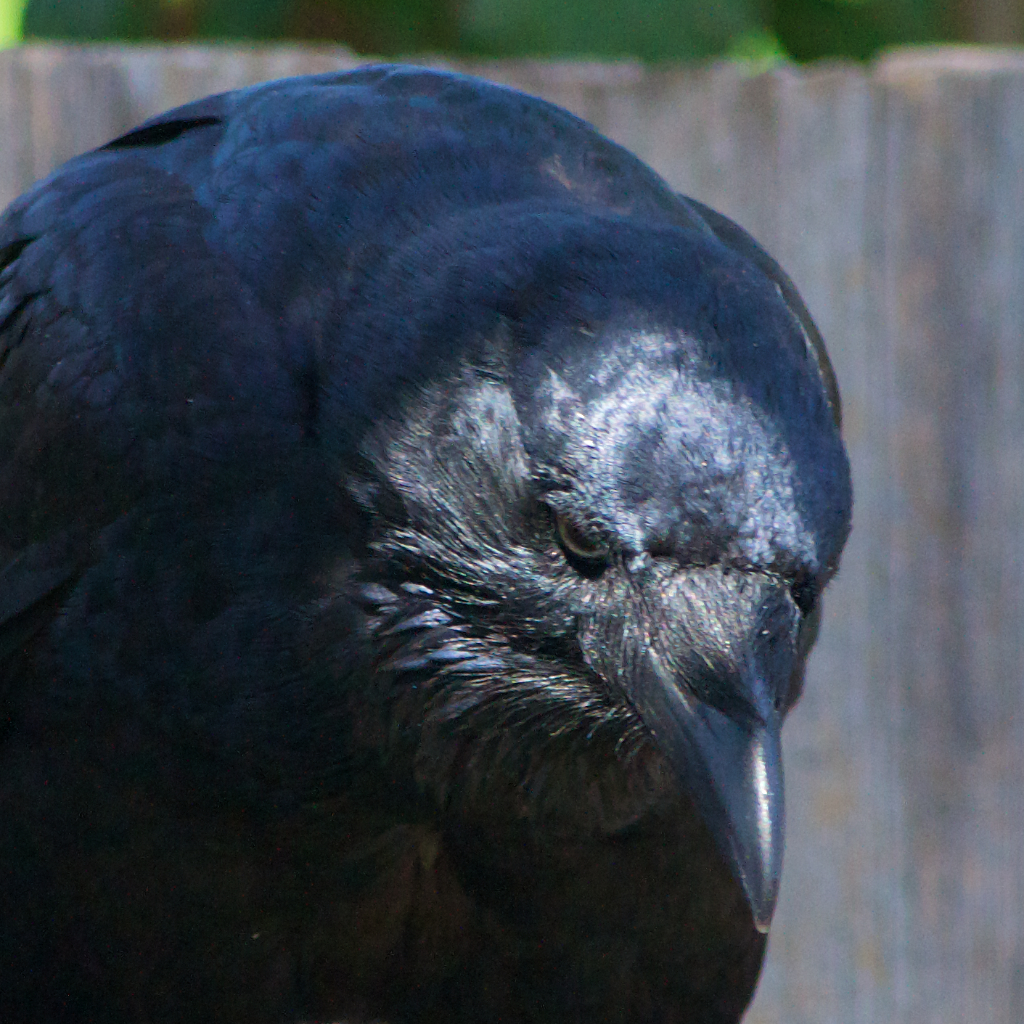 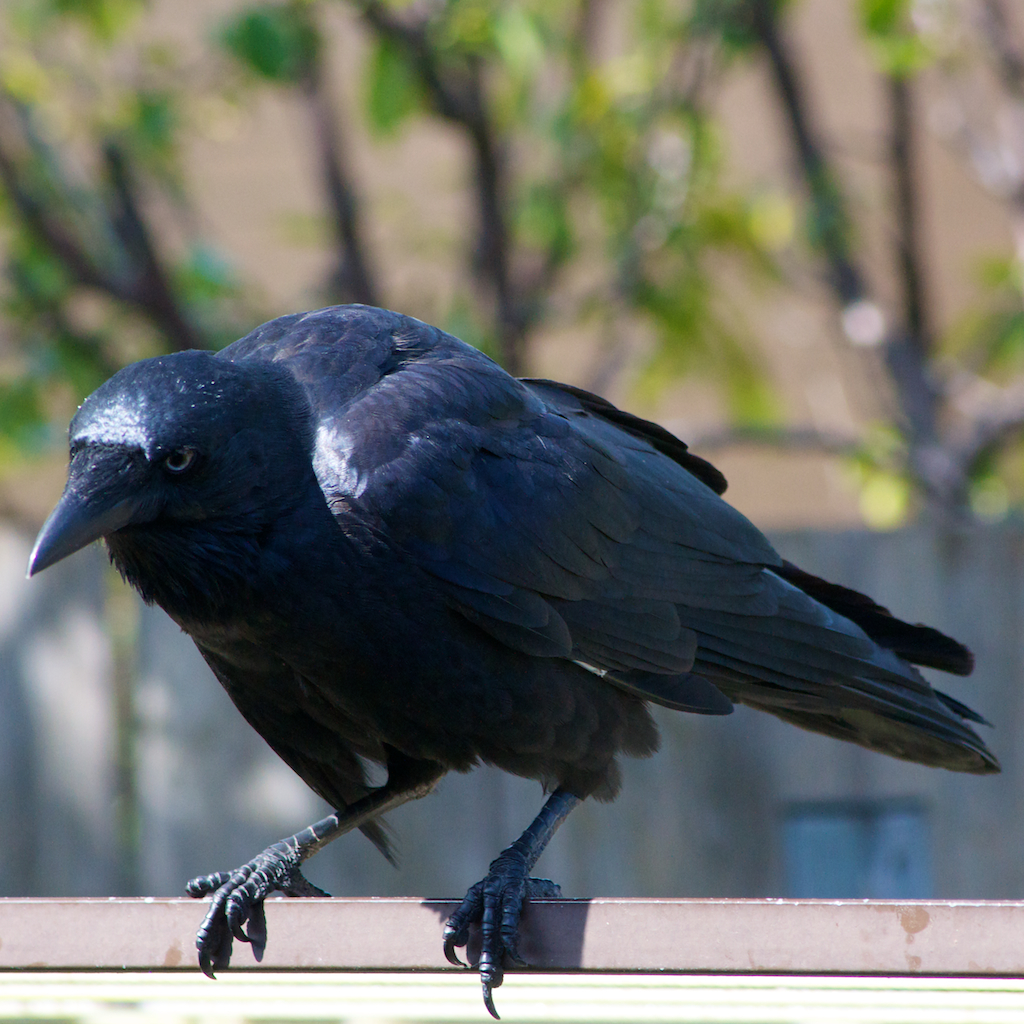 |
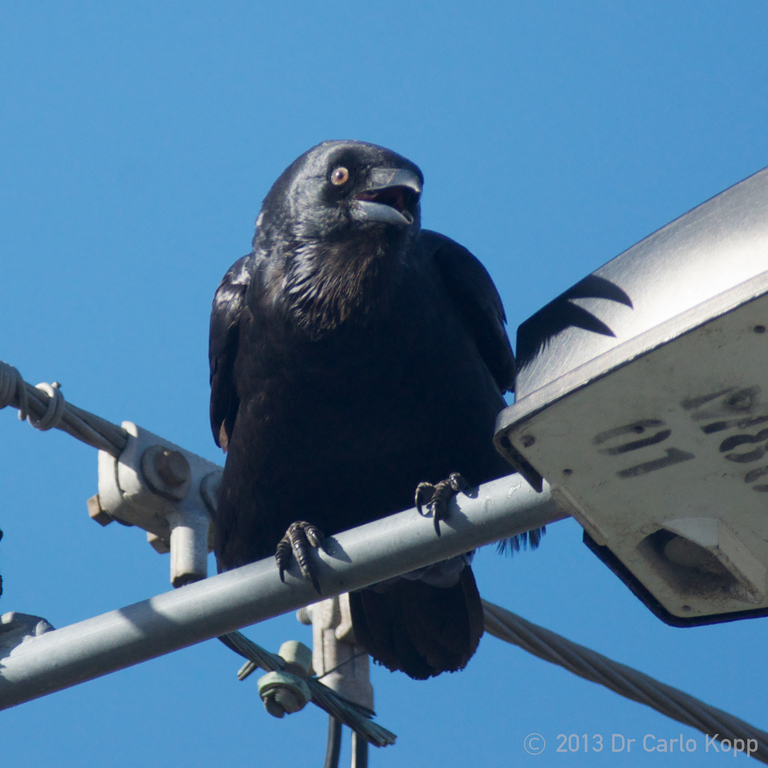 A juvenile Australian
Raven
perched on a streetlight in Noble Park, in September, 2013 (D90
with Sigma AF 400mm f/5.6 APO).
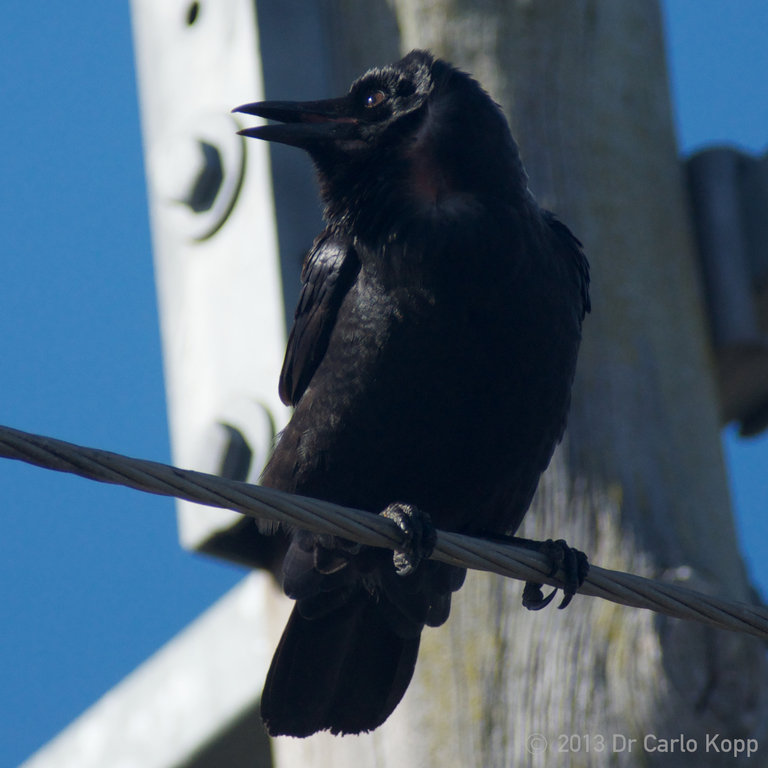 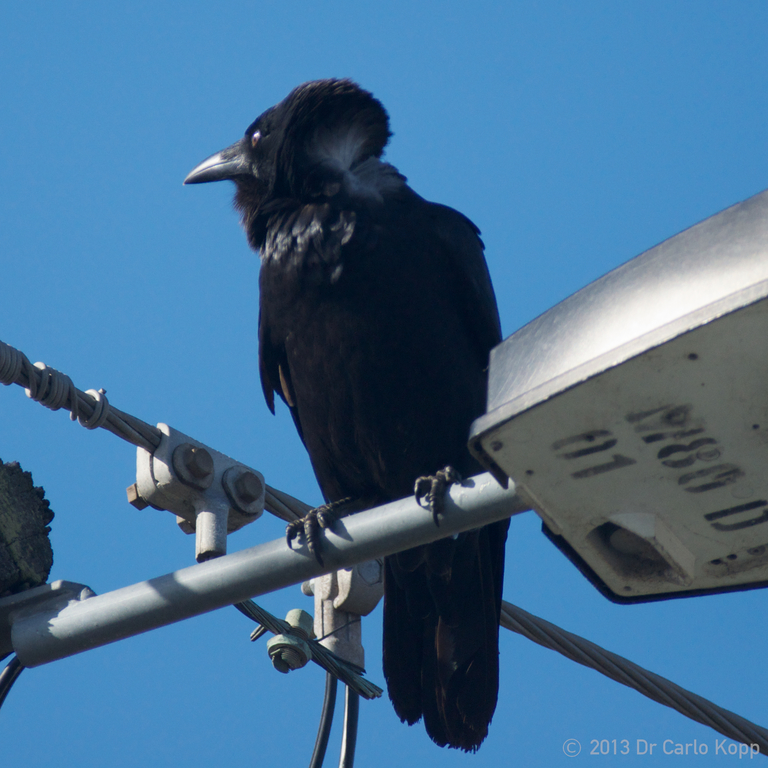 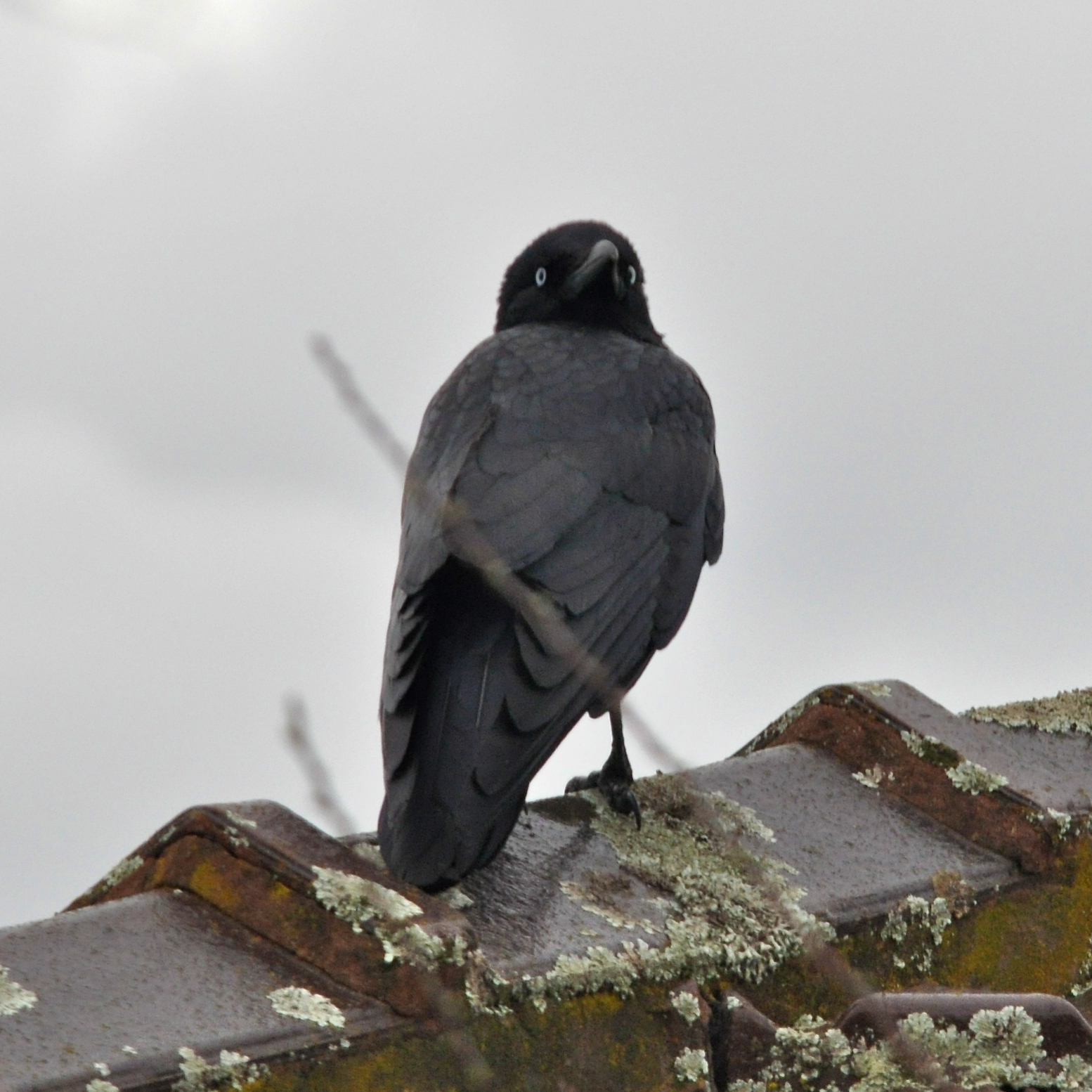 Above, below: Little Raven
perched on a roof in Noble Park. Sekor A 200 mm f/2.8 APO manual
focus lens mounted on a Nikon D90 at 450 ISO and 1/1000, using the
Legacy2Digital modified adaptor.
|
Silver Gull |
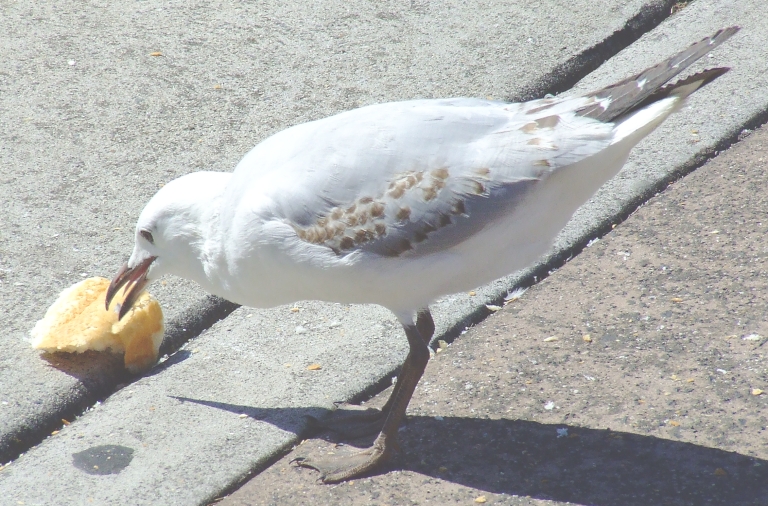 The Silver Gull is a common sight in Australian
suburbs, appearing at shopping centres, sports venues and any other
areas where a handy snack can be found, often considerable distances
from water. While frequently regarded to be a pest, people often
overlook the valuable service these birds provide collecting garbage.
This is an immature specimen in a shopping centre carpark.
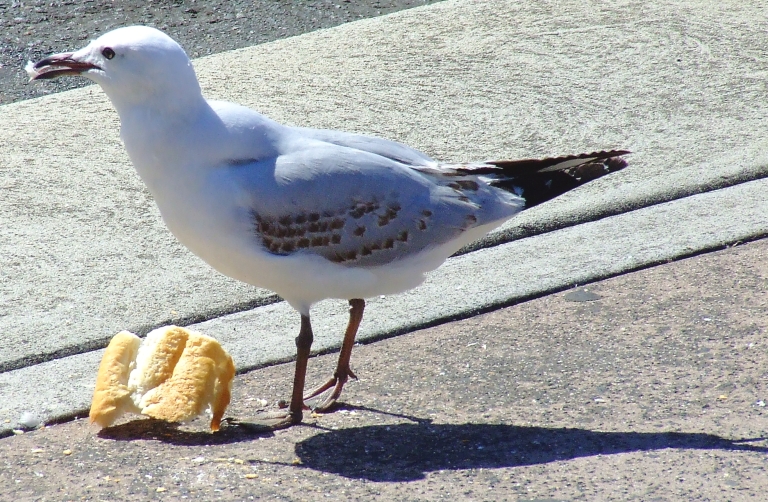 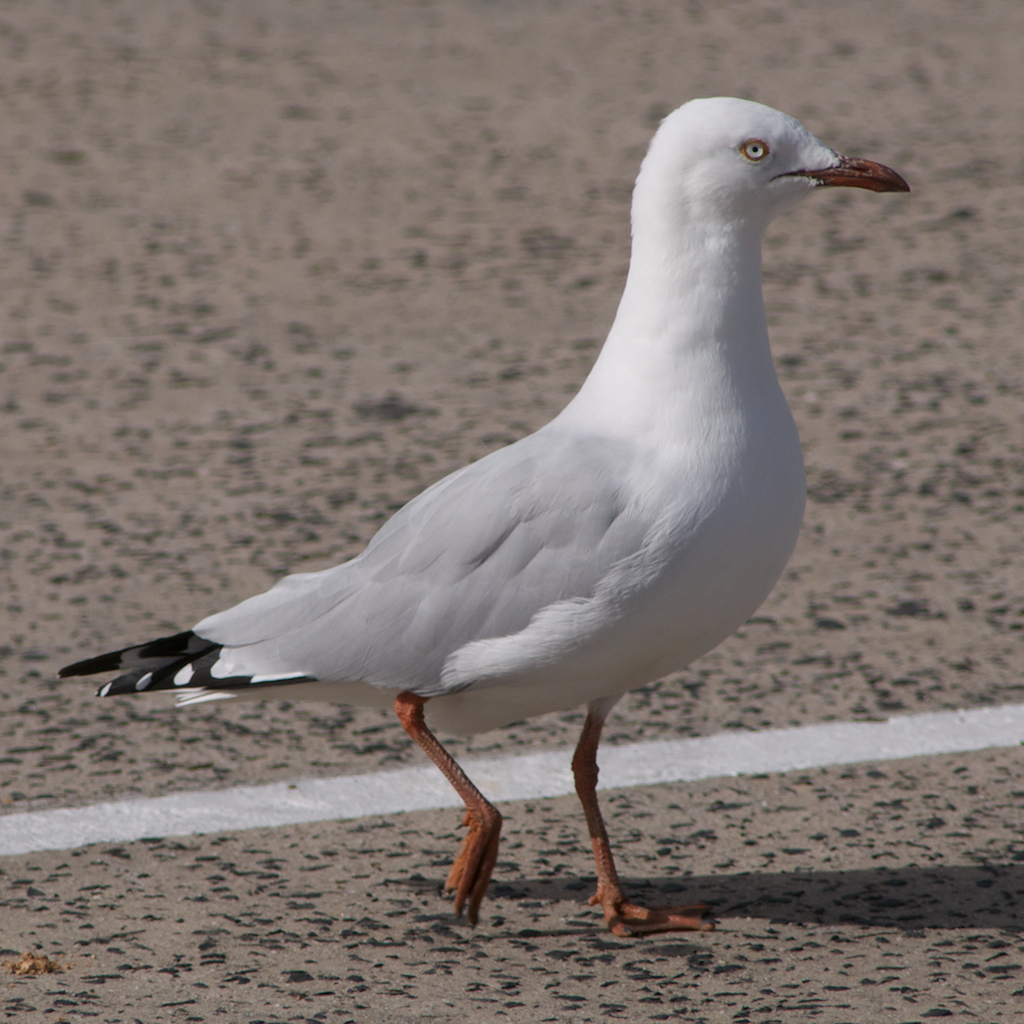 Adult Silver Gull in a shopping centre carpark (Nikkor 70-300mm f/4-5.6D-ED/ D90). 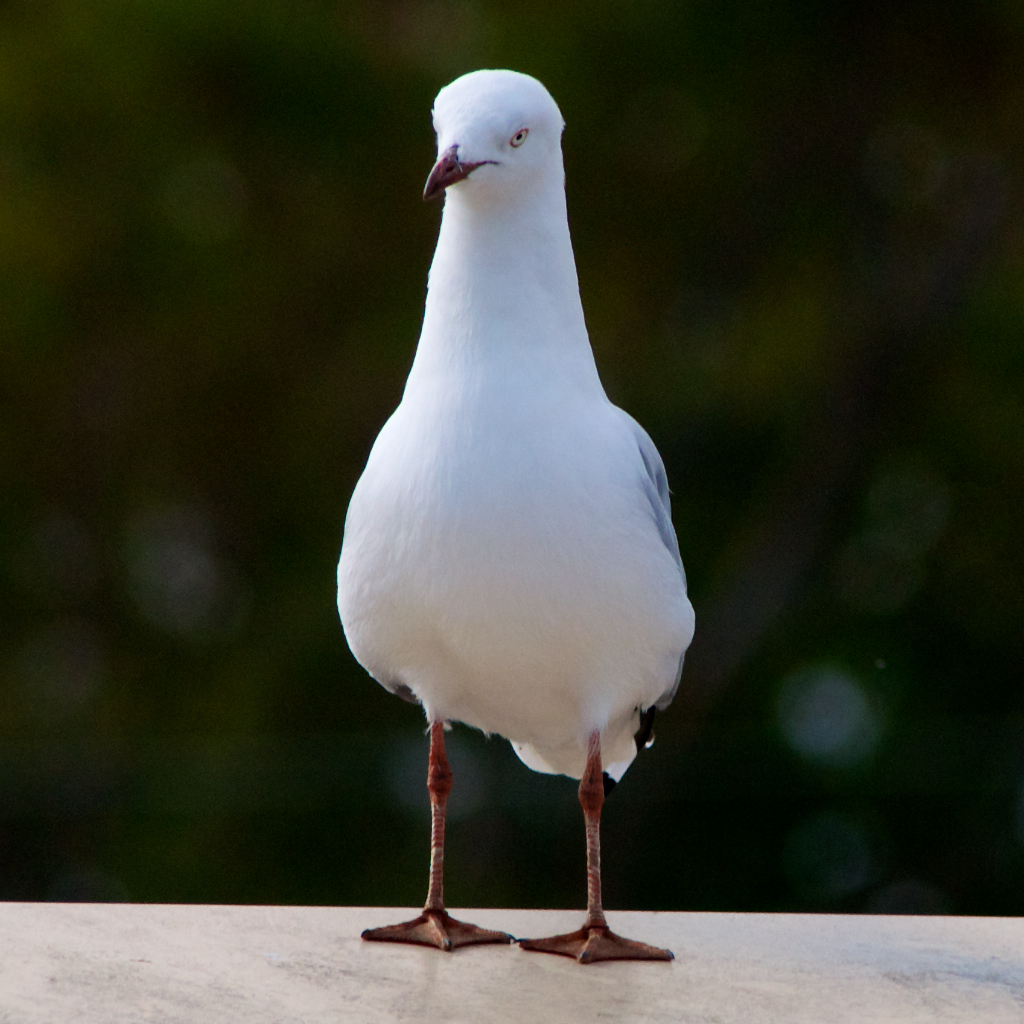 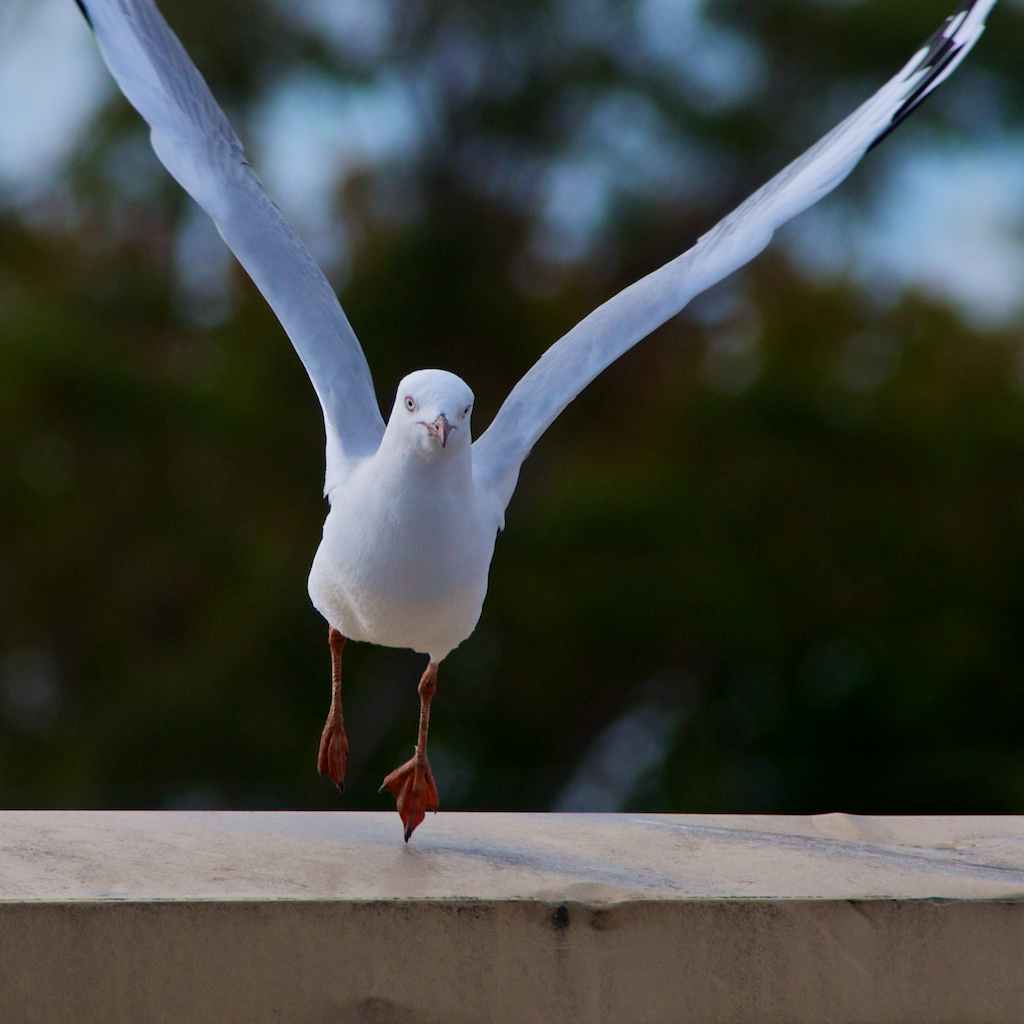 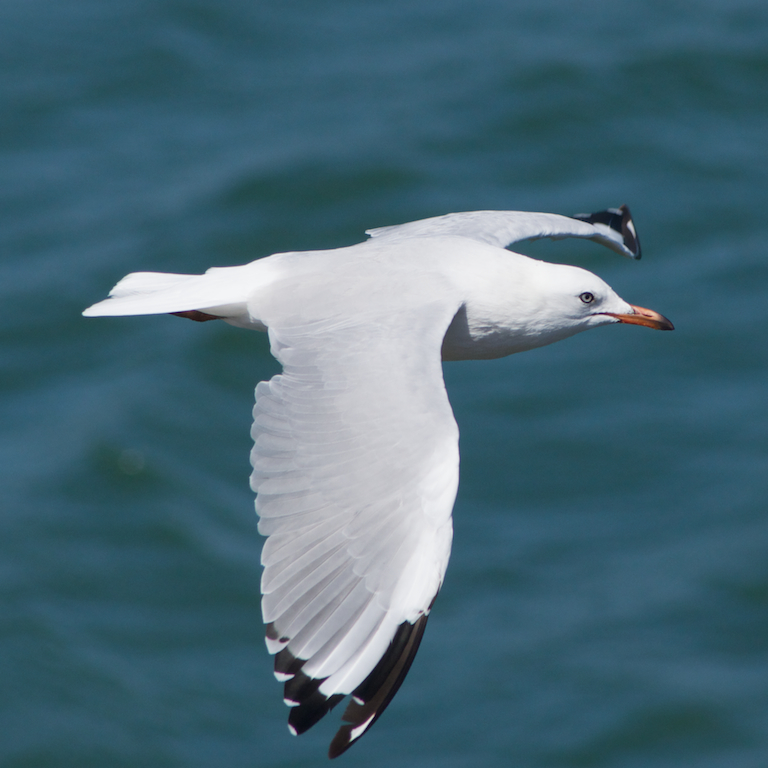 Adult Silver Gull in 20 knot wind at Sandringham (Nikkor 70-300mm f/4-5.6D-ED/ D90). 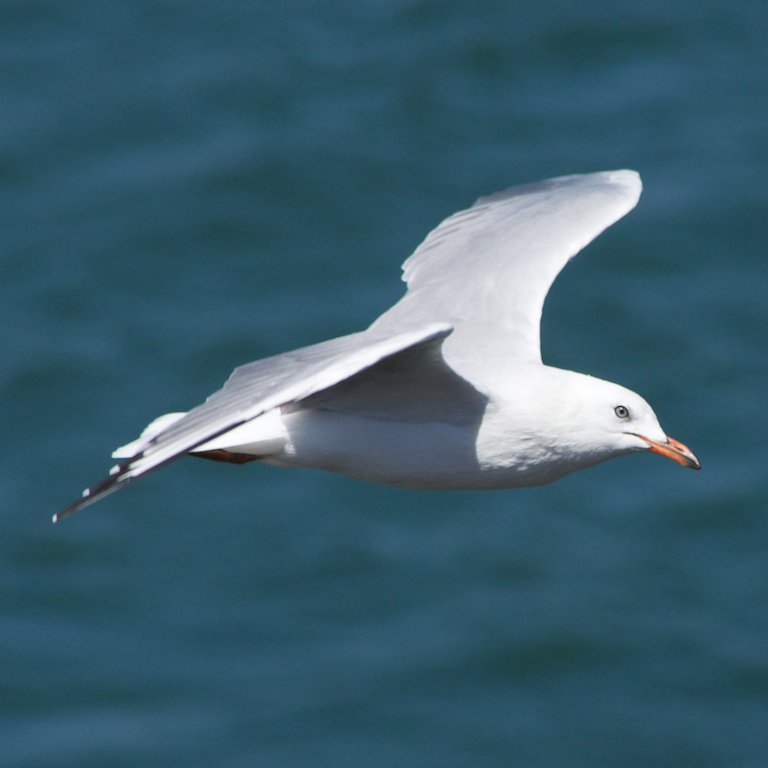 |
|
Rye, Mornington Peninsula, Victoria |
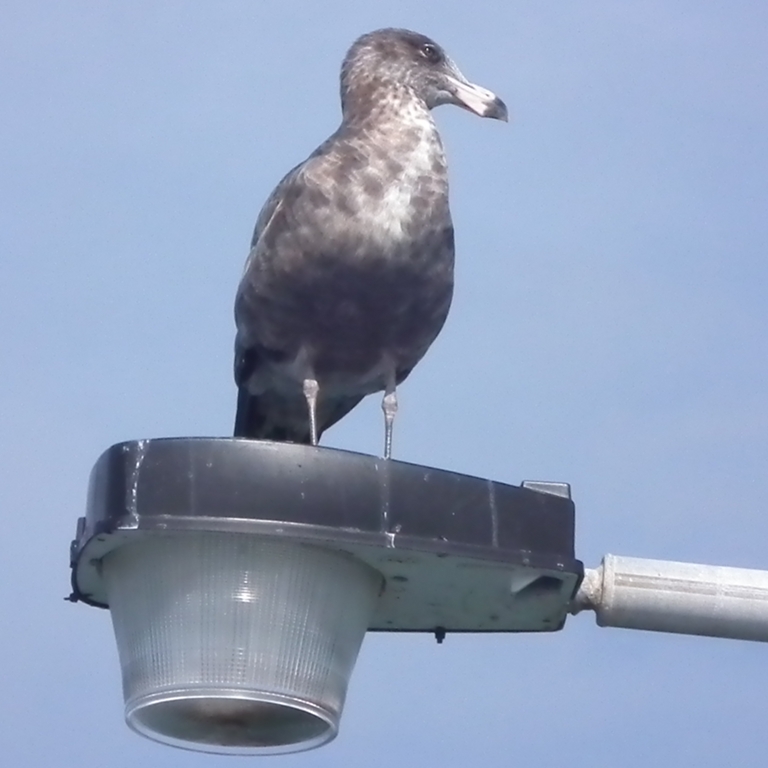 Pacific Gull juvenile (Larus
pacificus) posing for the camera in December, 2010, on the Rye
Jetty, Mornington Peninsula
(Fuji HS10 December, 2010).
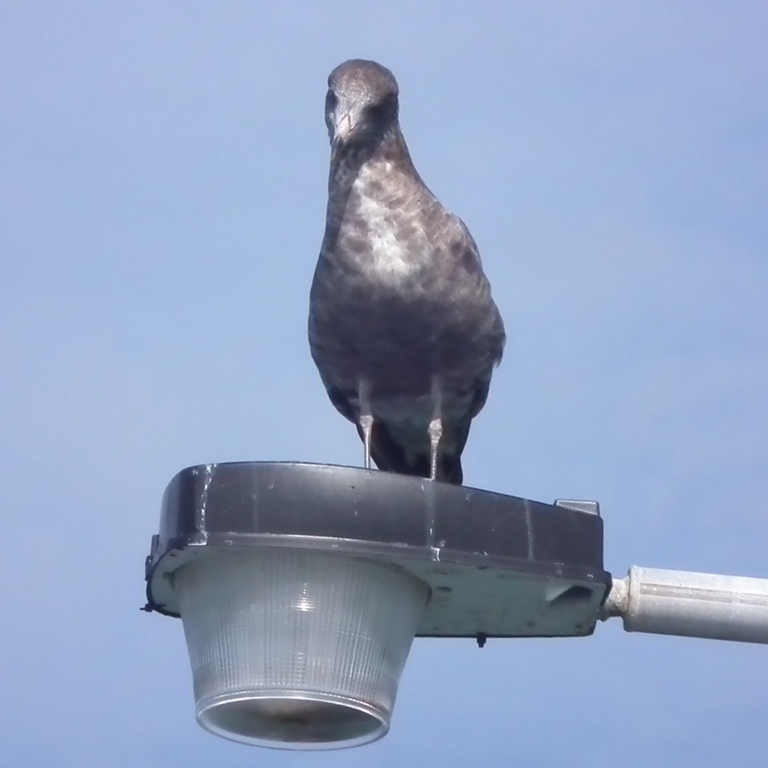 |
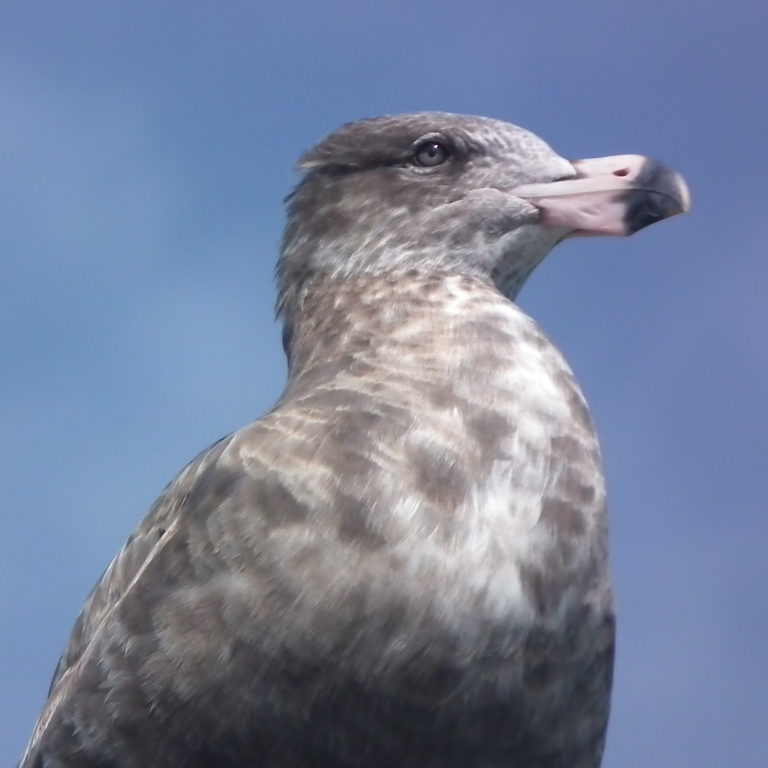 Pacific Gull juvenile (Larus
pacificus) portrait
(Fuji HS10 December, 2010).
|
|
Australian Suburban Wildlife |
| Other
Interesting
Wildlife
Sites http://www.wildlife-photo.org/  |
|
|||||||||||||||
| Artwork and text ¿ 1994 - 2010 Carlo Kopp; All rights reserved. |
| $Revision: 2.279 $ |